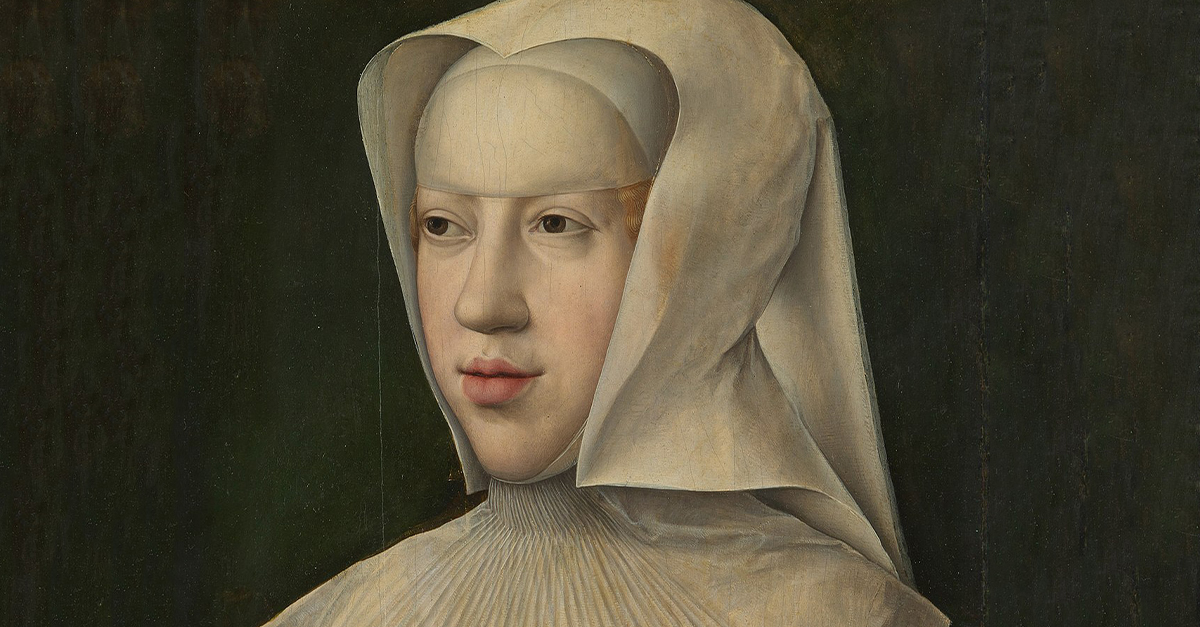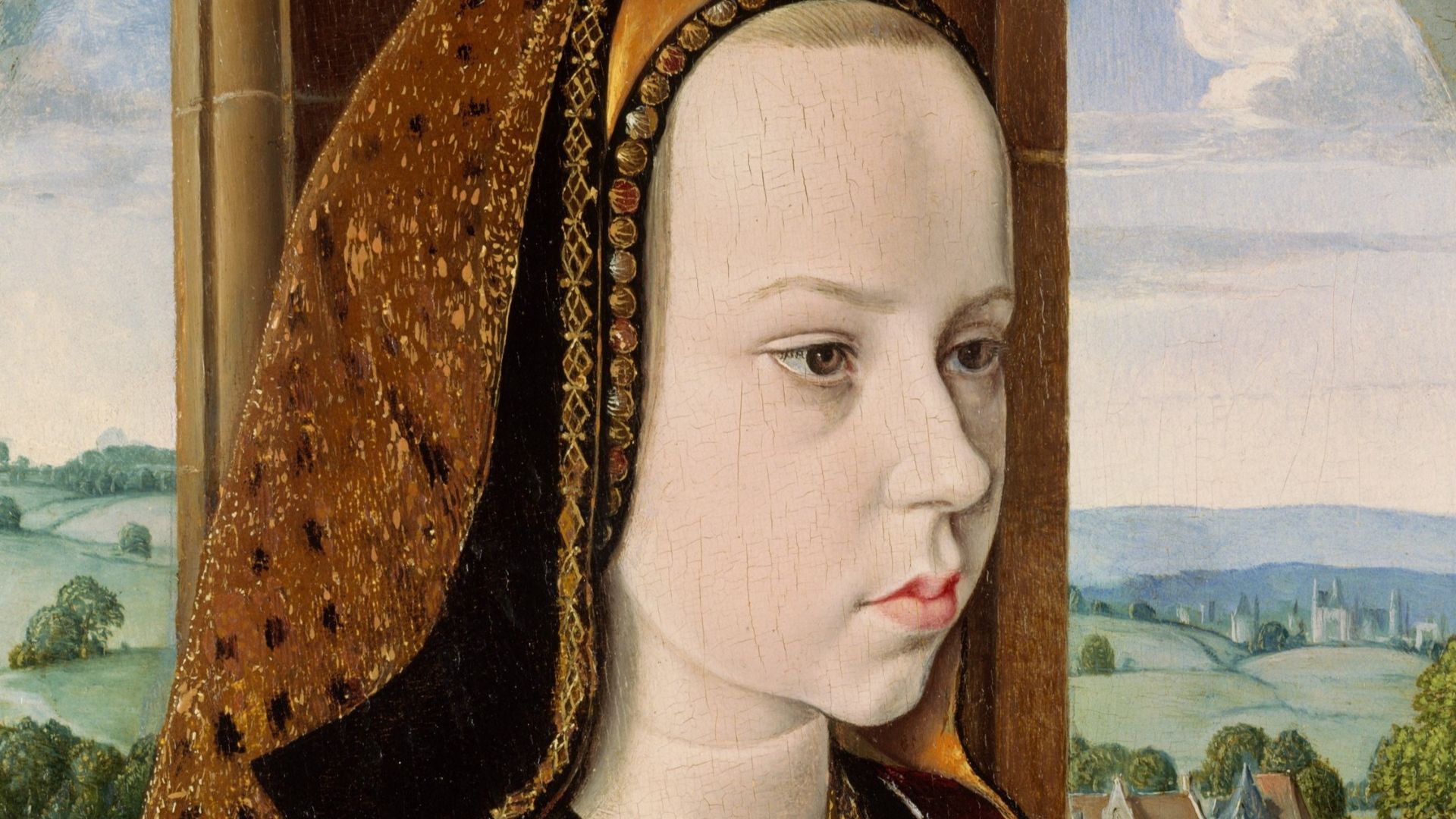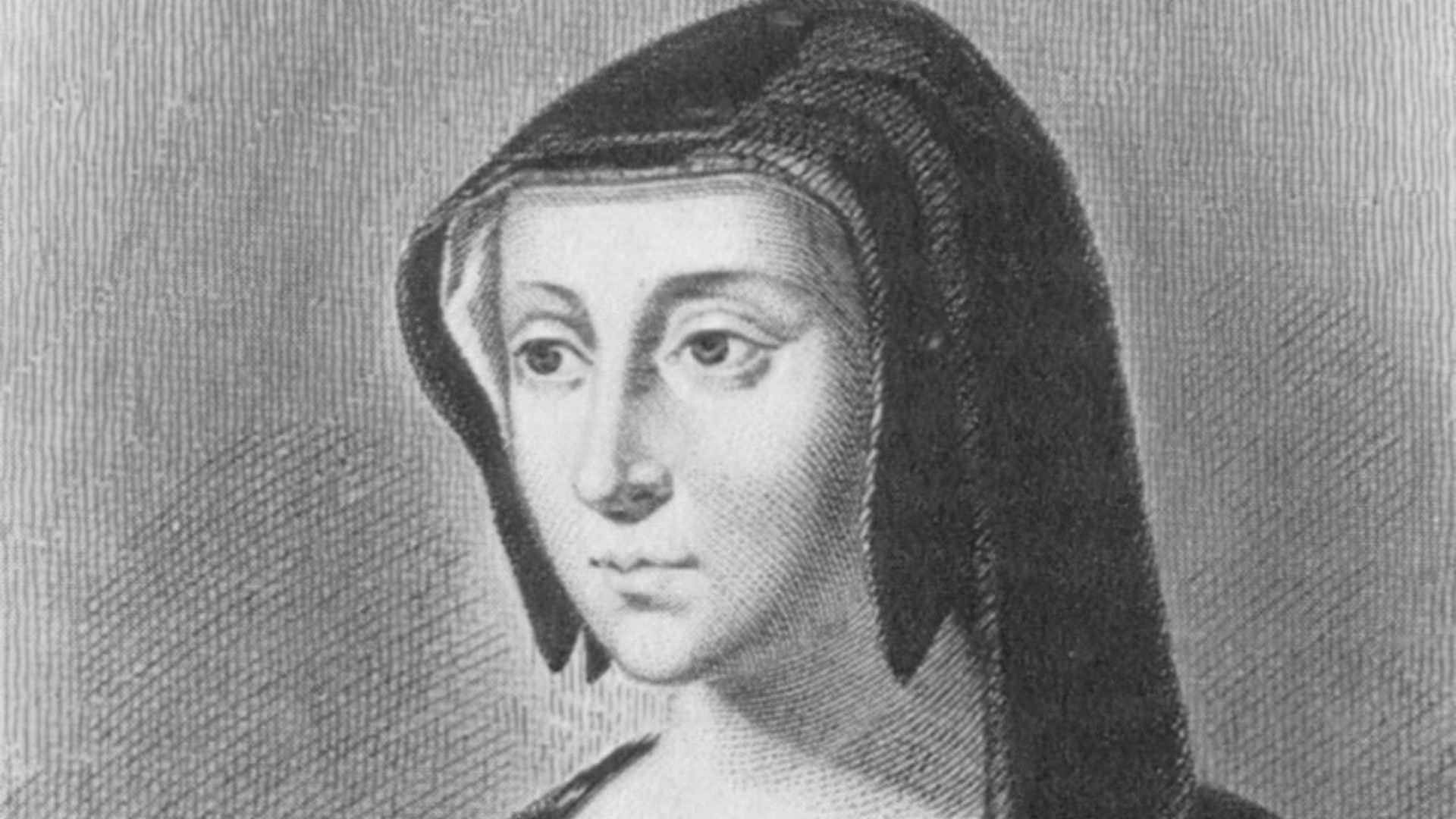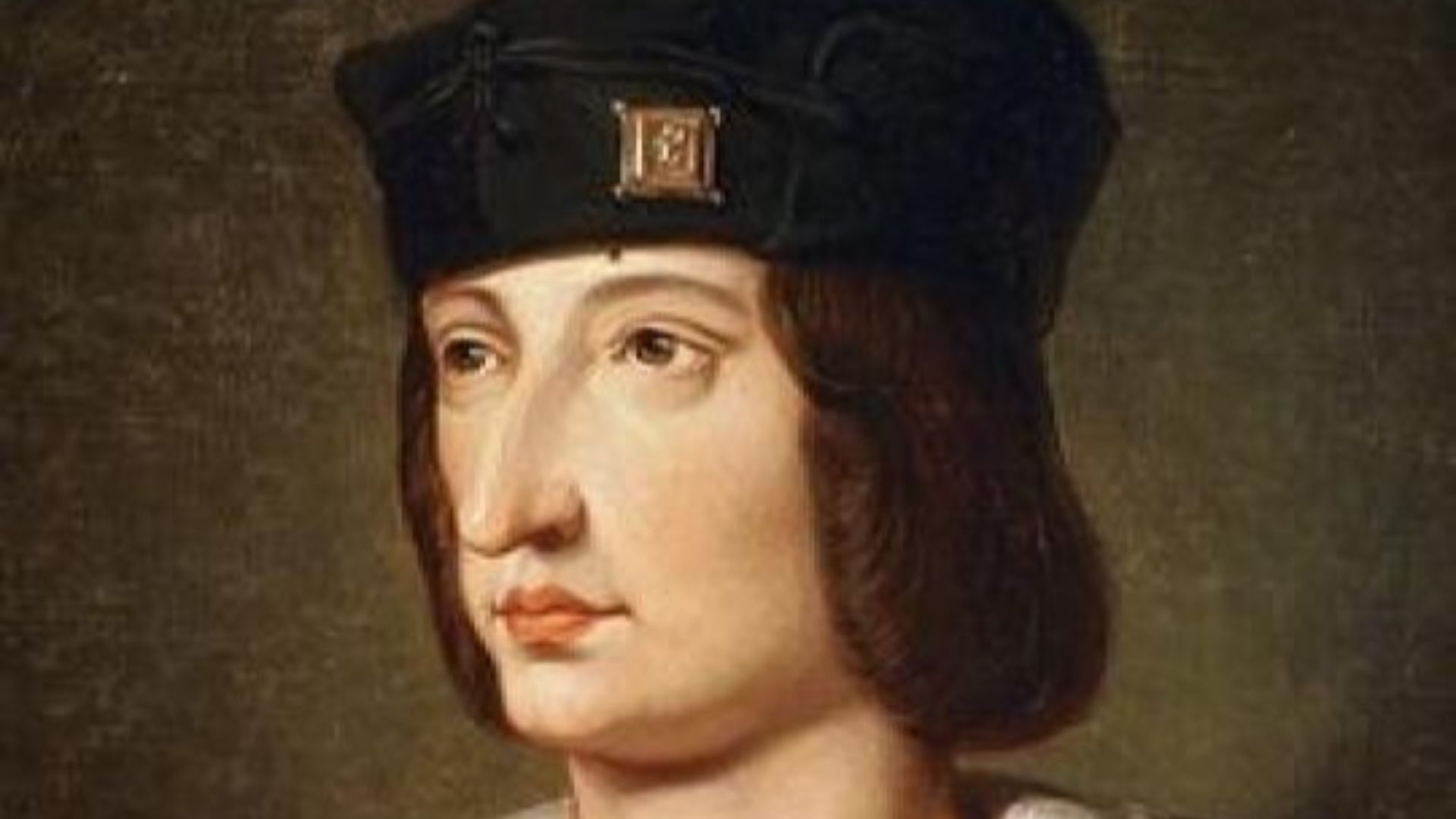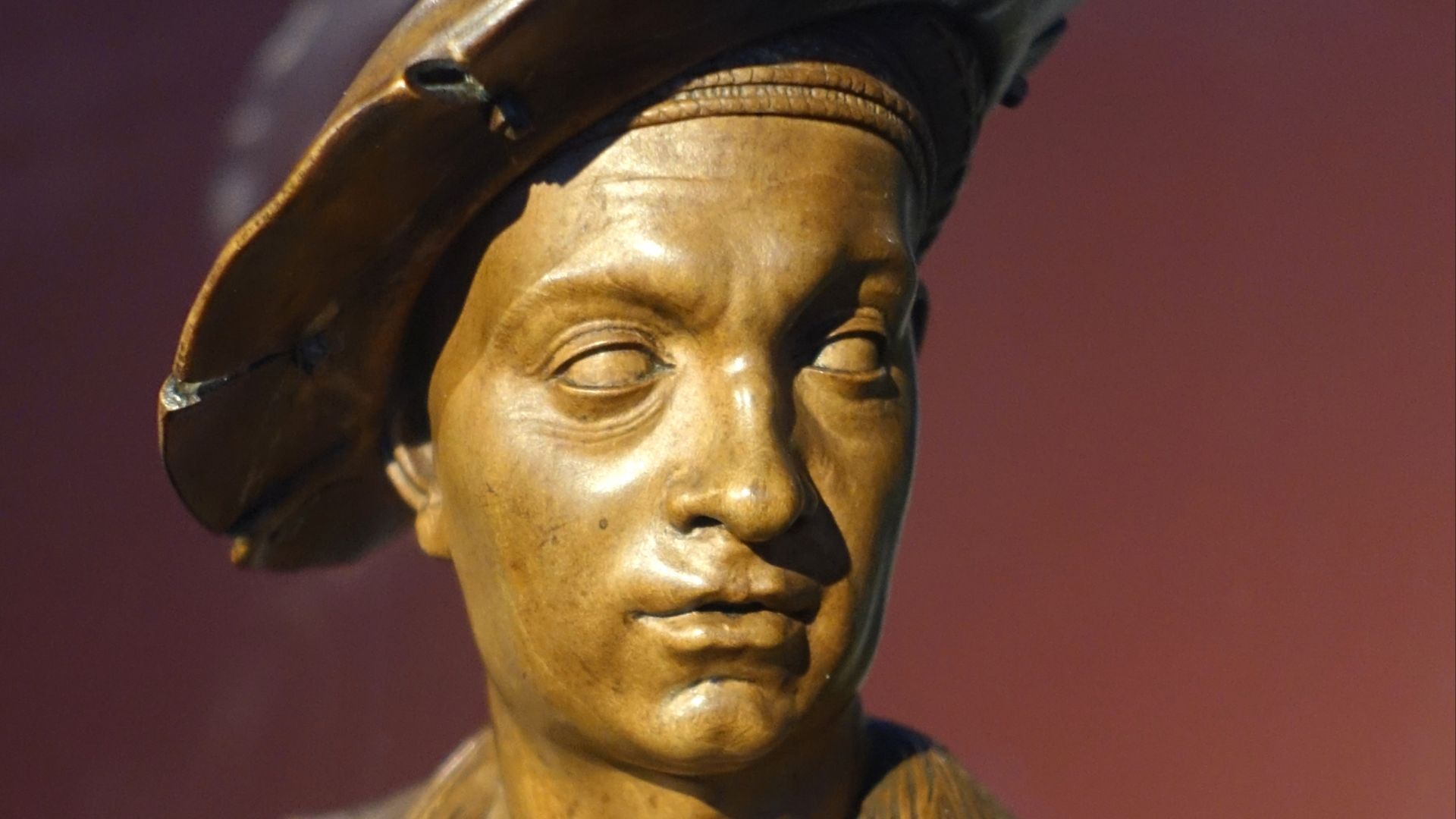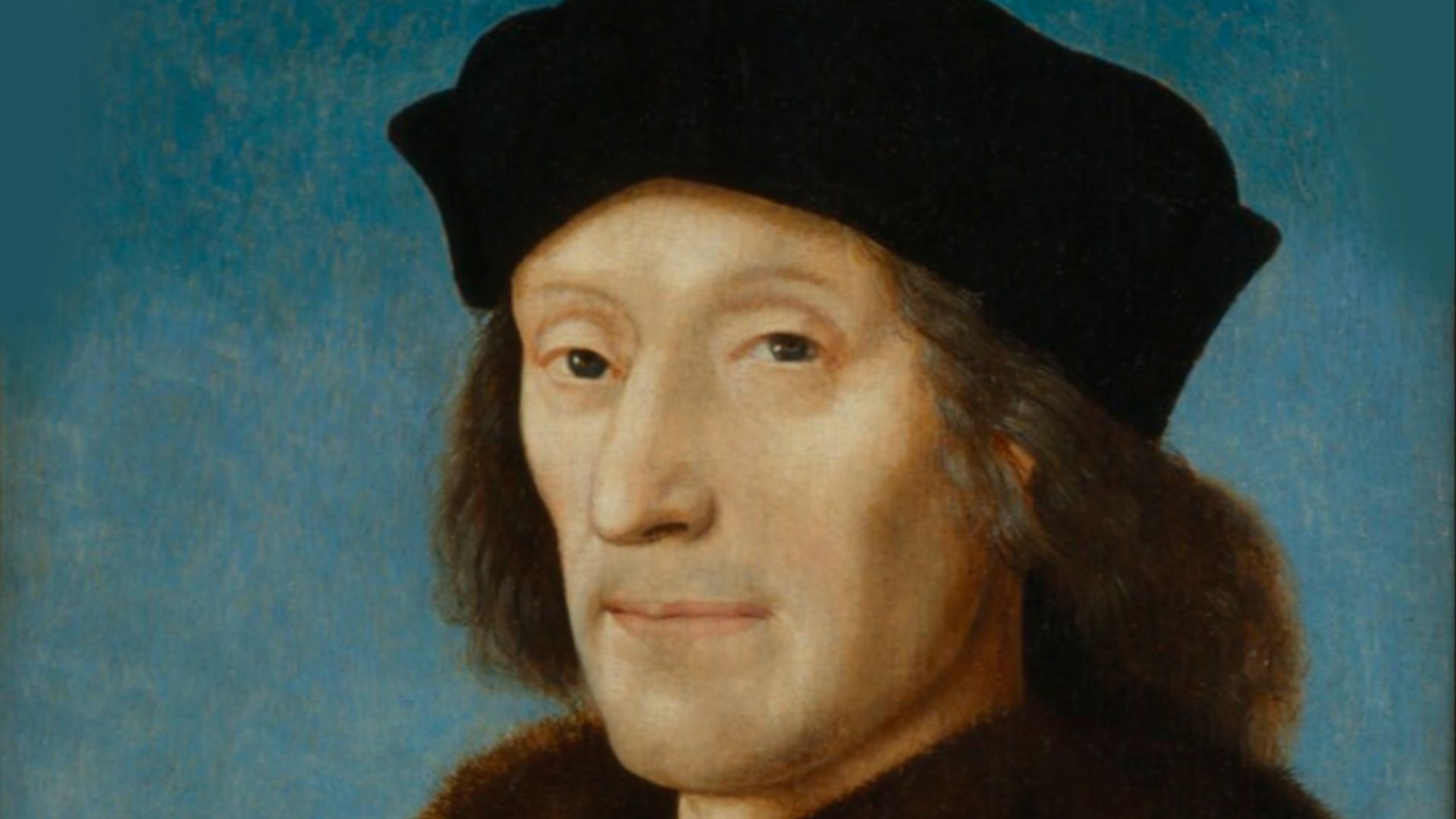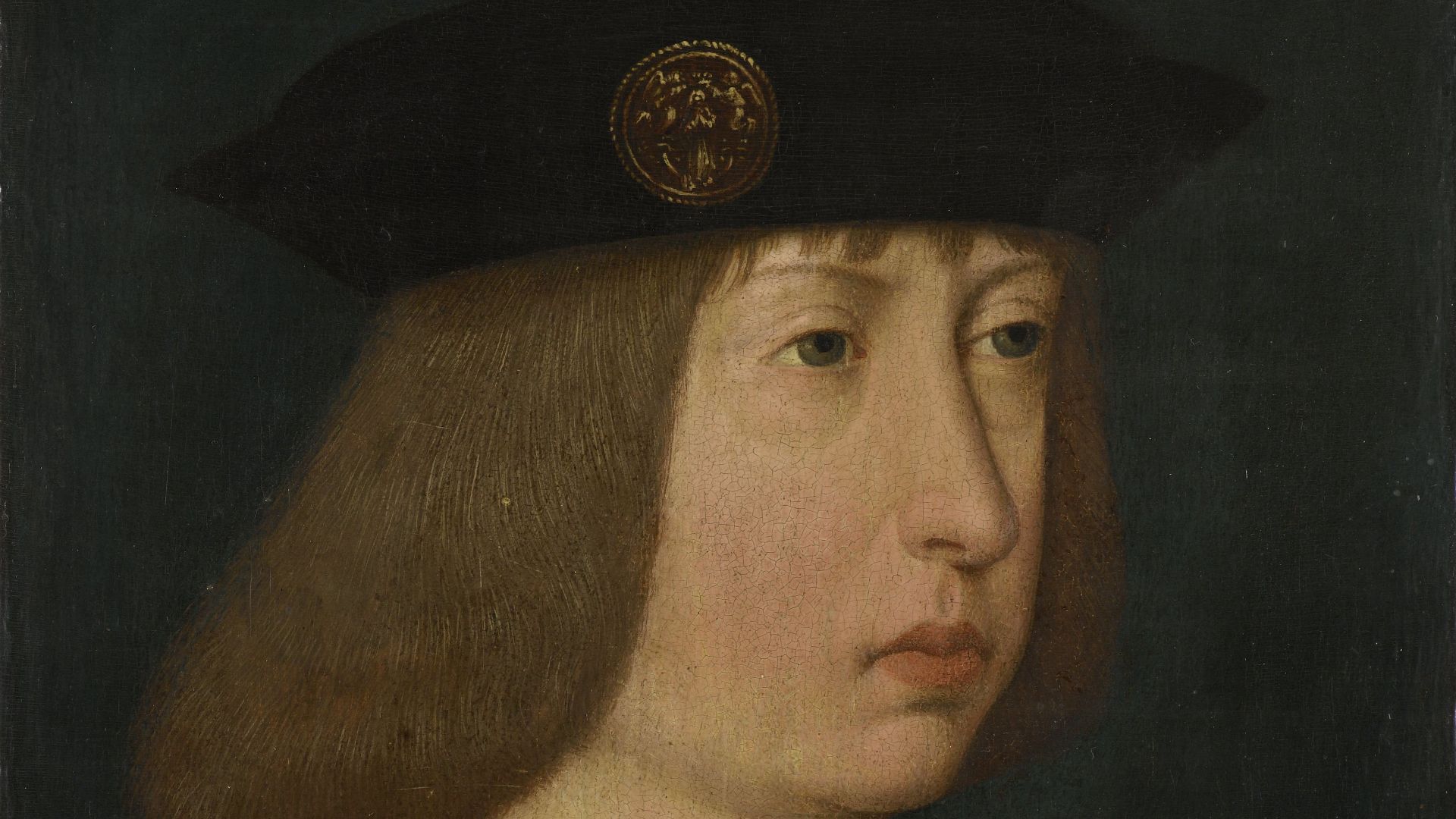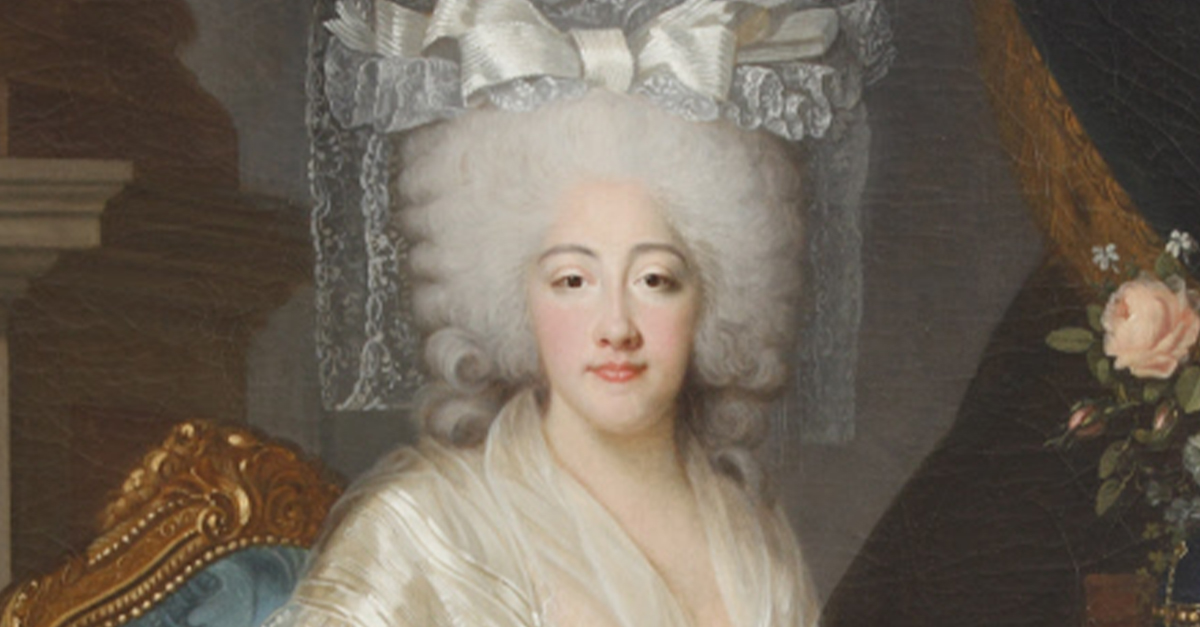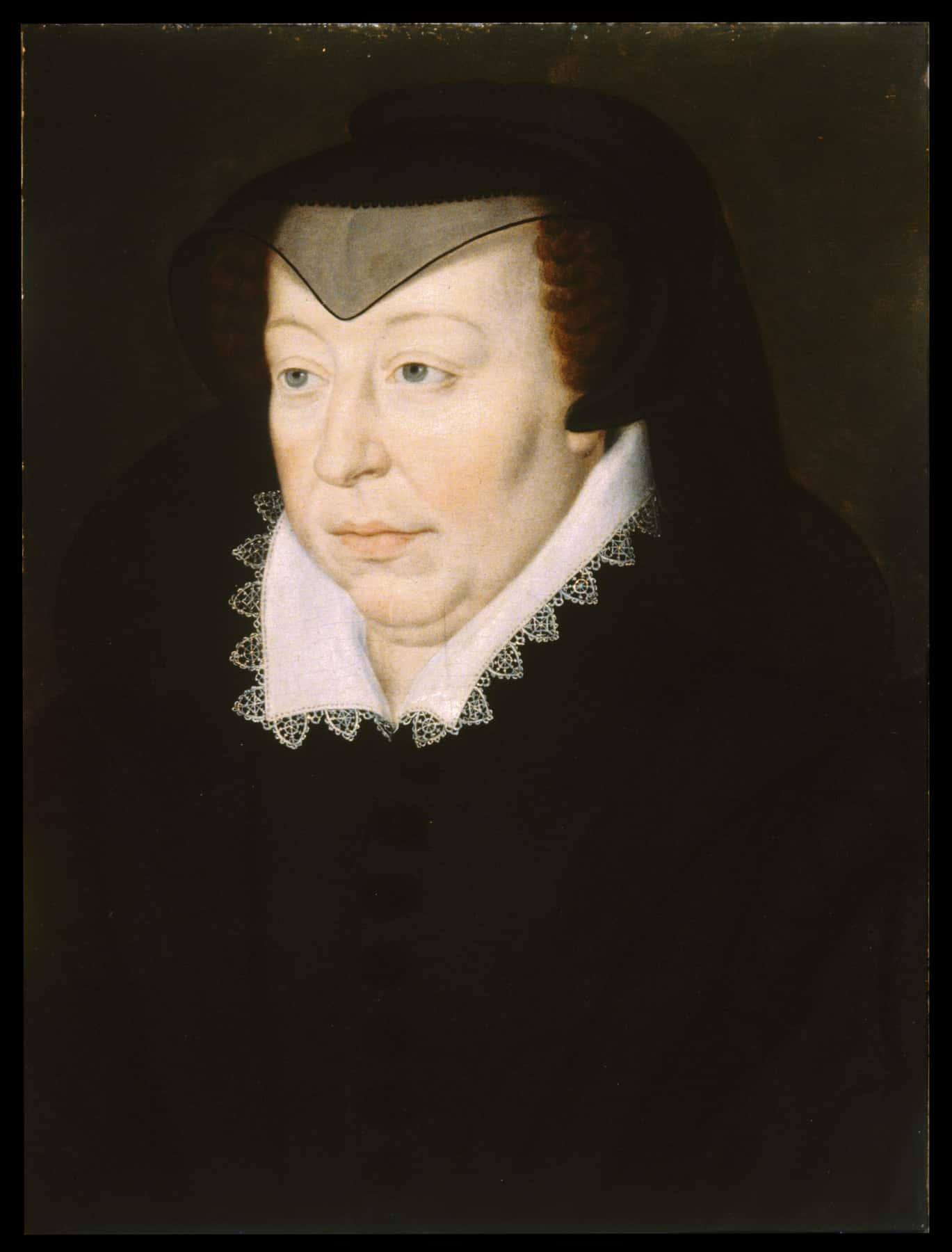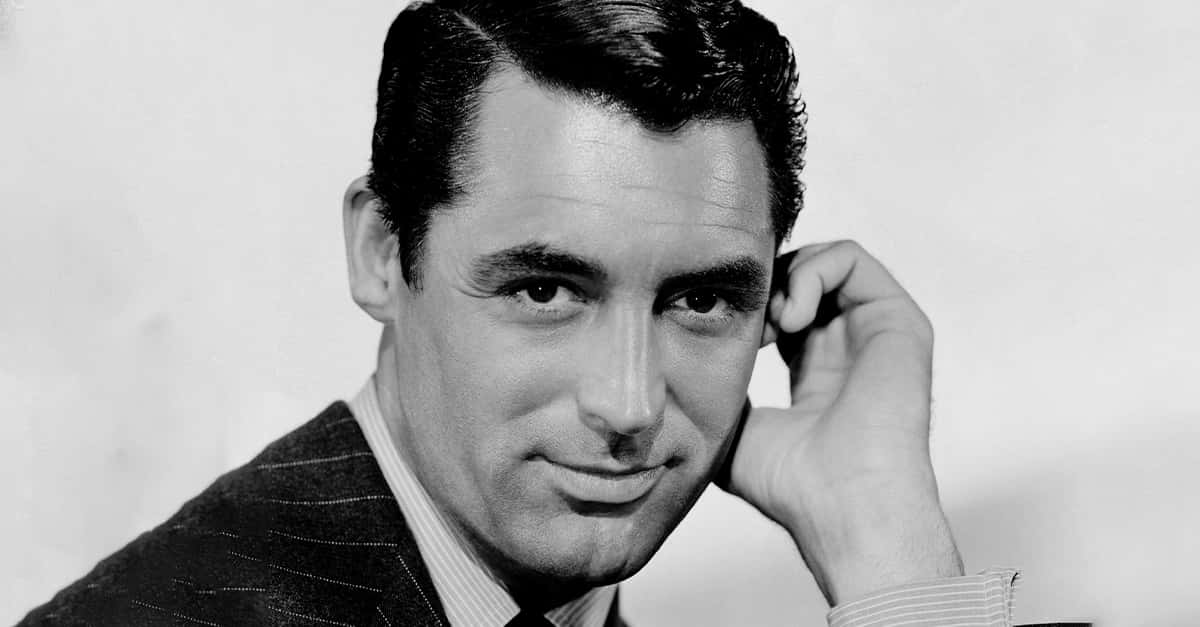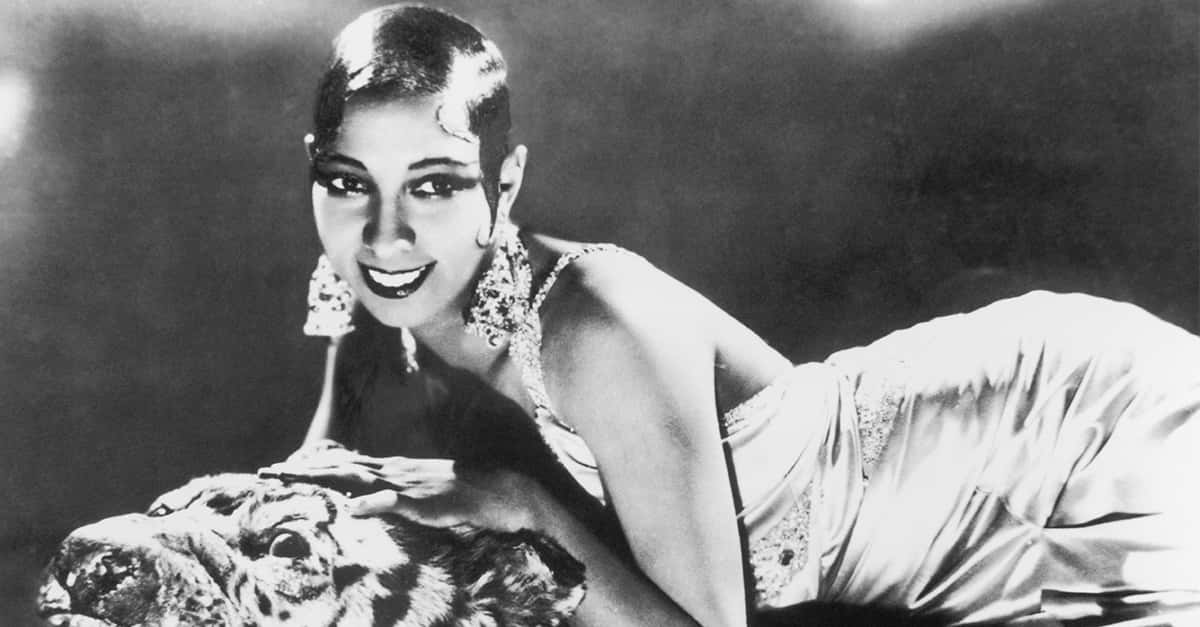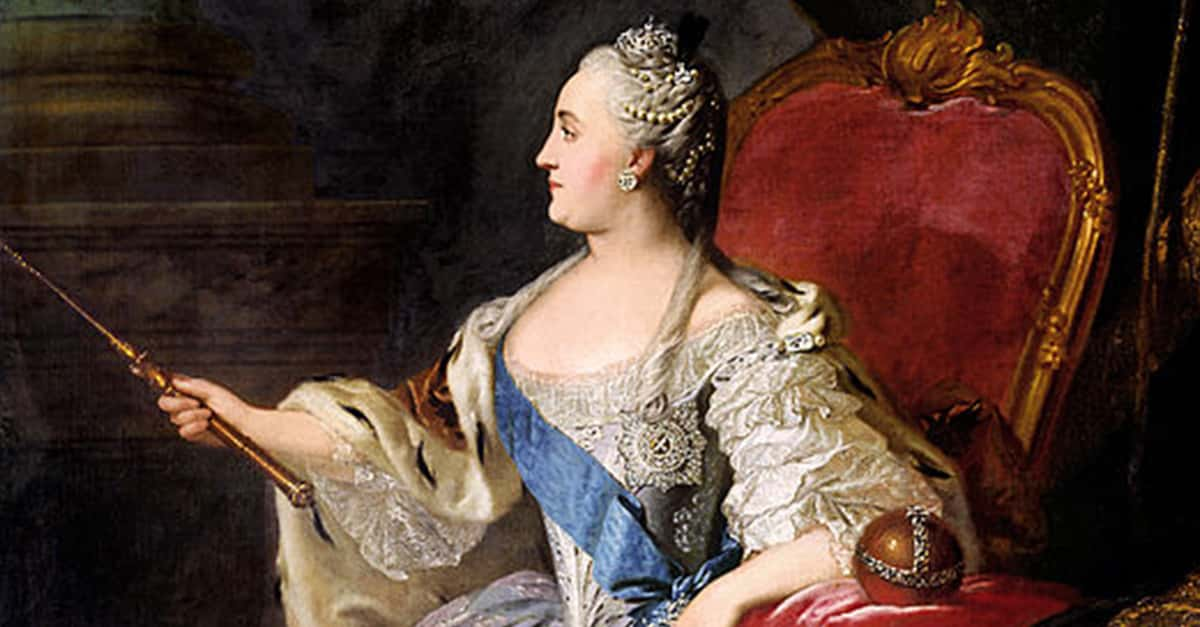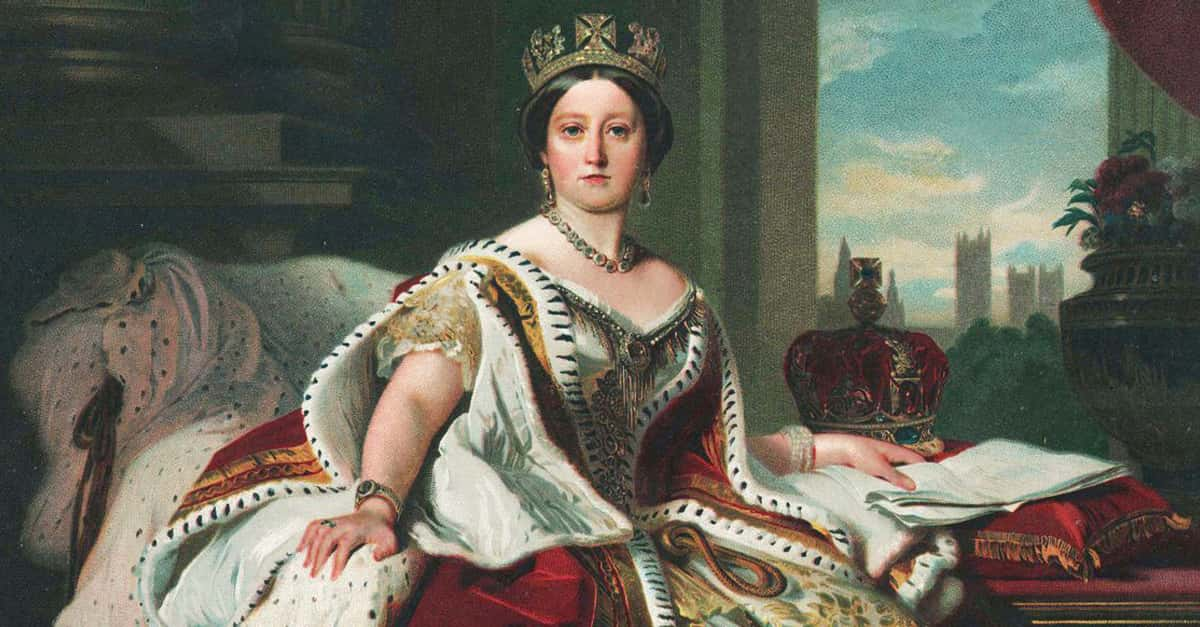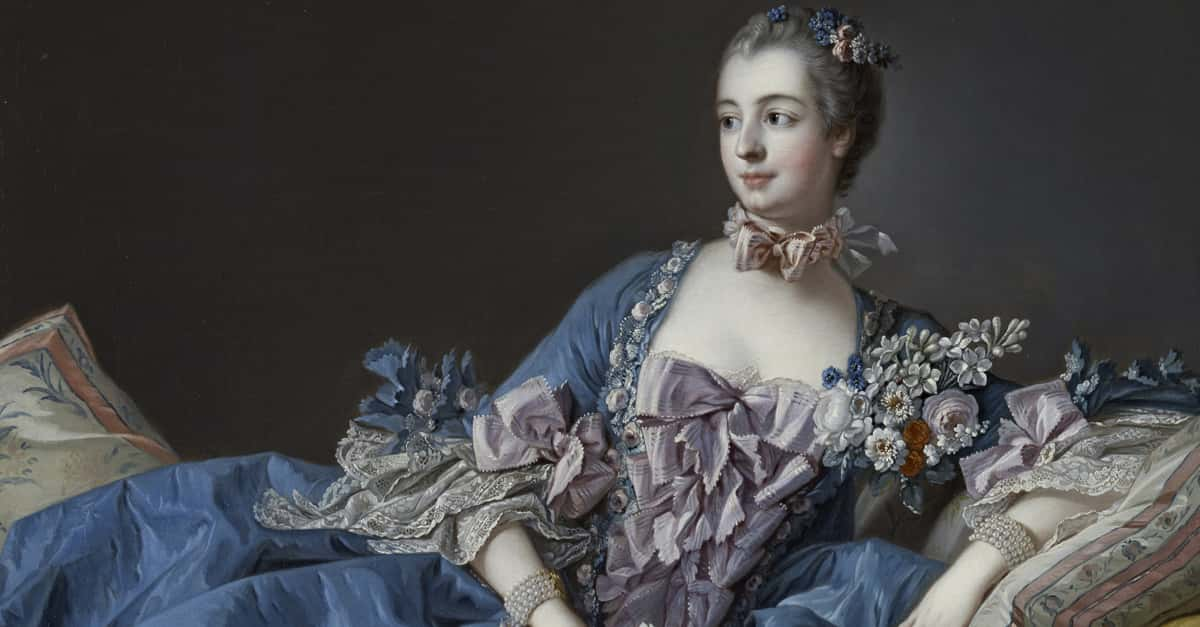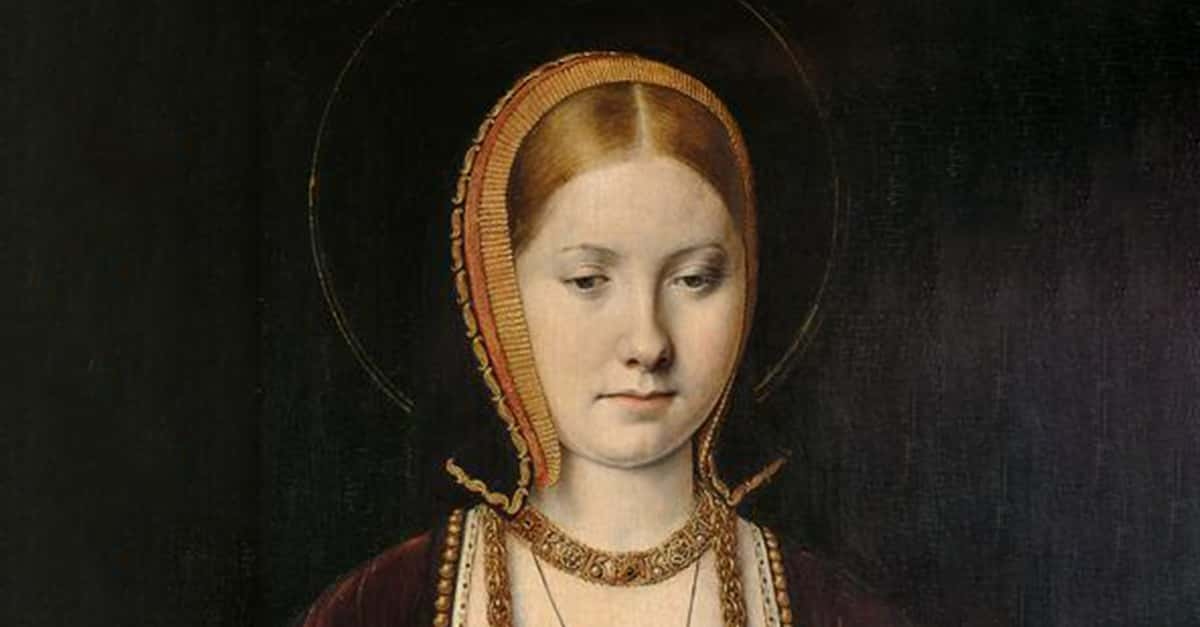Power For The Taking
From the moment of her birth, Margaret of Austria was in a position of great power. However, that power was not always her own. After years as a political pawn—bought and sold through marriage after marriage—Margaret saw the chance to embody her power and took it.
Through intellect and good strategy, Margaret elevated herself to a position few women had seen before her: She became the one in control. 
1. She Wasn’t Austrian
Despite her name, Margaret spent little to no time in or around Austria. It simply indicated that she was a member of the Austrian Habsburg family through her father, Maximilian of Austria, the future Holy Roman Emperor. Margaret was born in Brussels, Belgium, and considered the Netherlands her home. But tragedy marred her early life.
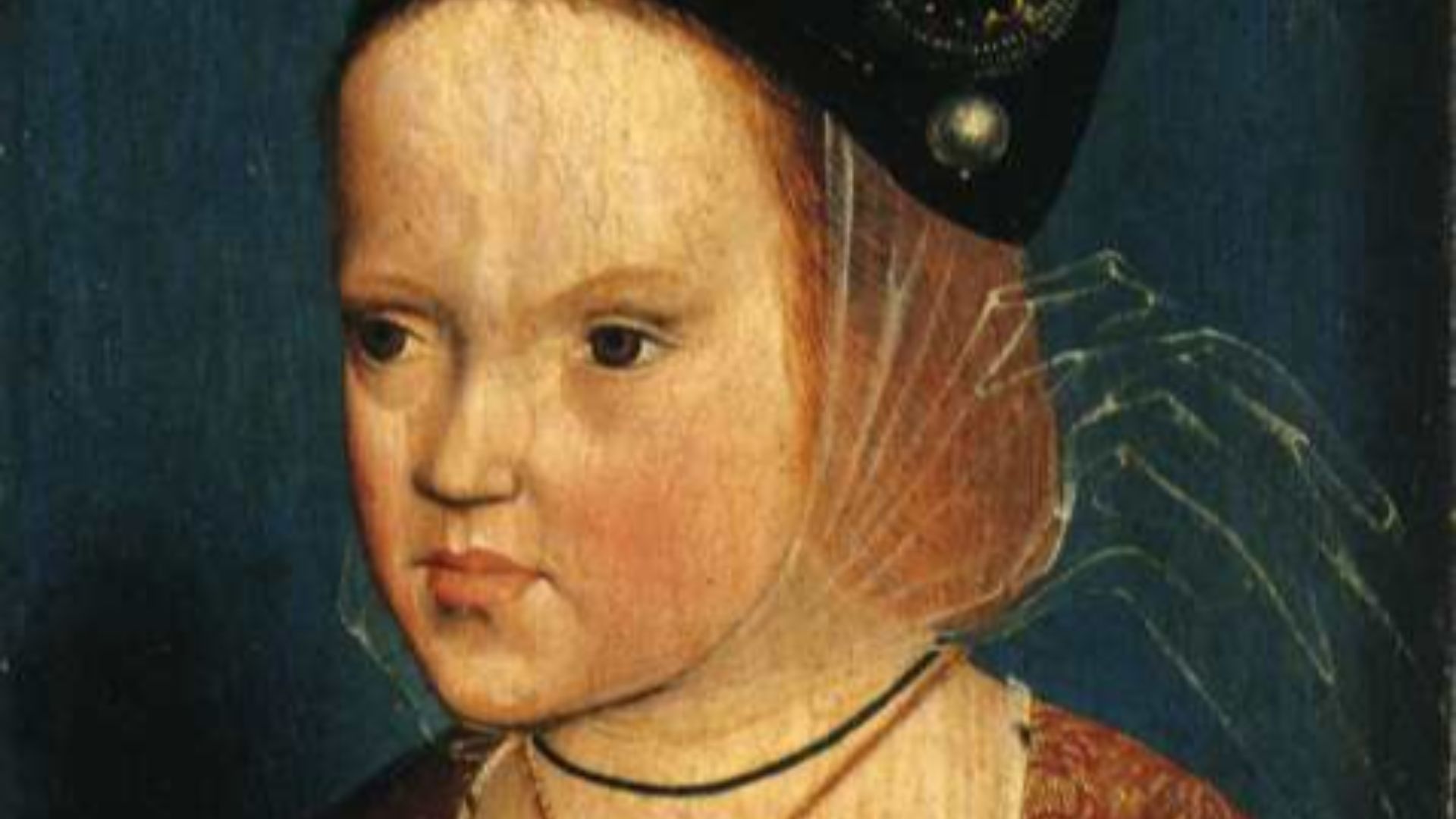 Master of the Legend of the Magdalene, Wikimedia Commons
Master of the Legend of the Magdalene, Wikimedia Commons
2. She Had Duties Early
Together, her parents—Maximilian and Mary of Burgundy—ruled over the Low Countries, otherwise known as the Netherlands. However, Margaret never truly got to know her mother. Mary left the world when Margaret was two years old; her brother, Philip the Handsome, was scarcely older than her.
Despite this, he became sovereign of the Low Countries with their father acting as regent. Margaret had her own duties to fulfill, even at the age of two.
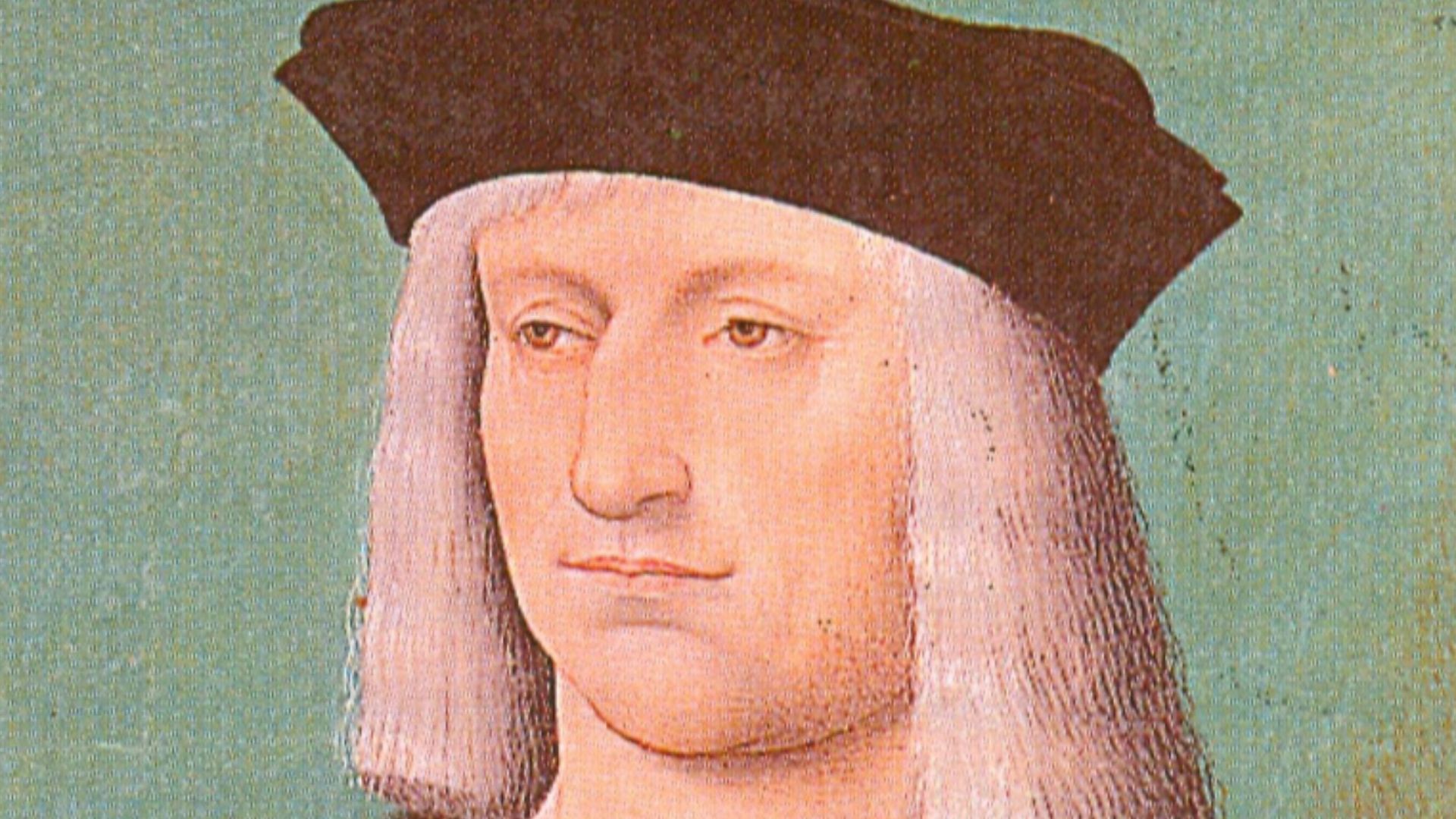 After Joos van Cleve, Wikimedia Commons
After Joos van Cleve, Wikimedia Commons
3. Her Life Changed Forever
Margaret faced a life of upheaval in 1482. However, as she was just two years old, it is difficult to tell what she made of it all. No sooner had her mother passed than the family signed Margaret’s life away in the Treaty of Arras. The world shifted beneath Margaret’s feet long before she learned to walk steadily upon it.
 Bibliothèque nationale de France, Wikimedia Commons
Bibliothèque nationale de France, Wikimedia Commons
4. Her Father Signed Her Away
Through the Treaty of Arras, Margaret’s father and King Louis XI agreed to the union between their two families. A year later, Margaret, now three, became engaged to Louis's 13-year-old son, Charles. With the arrangement made, they shipped Margaret, along with the regions of Franche-Comte and Artois, to France without a second thought.
Her life would never be the same again.
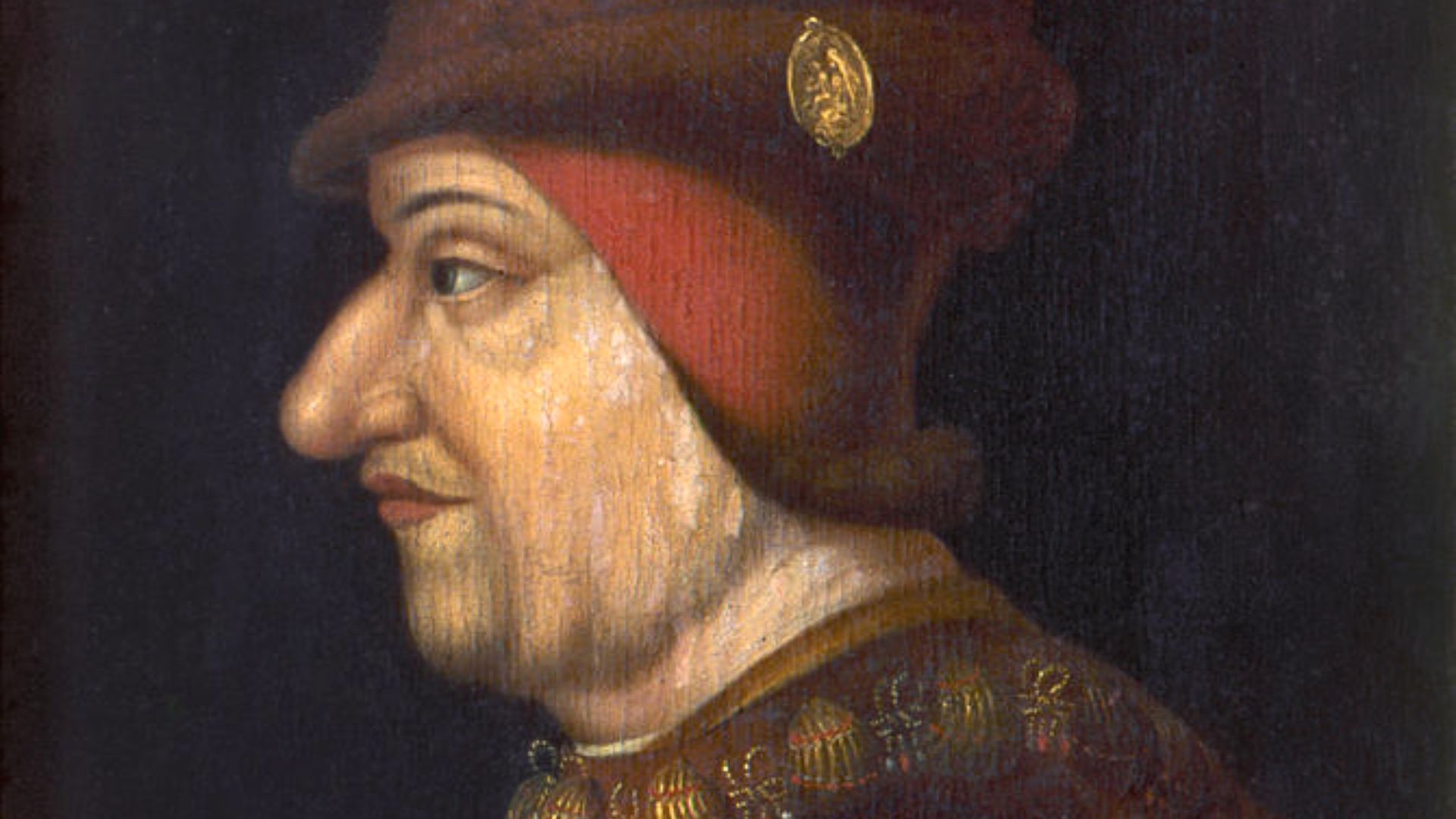 AnonymousUnknown author, Wikimedia Commons
AnonymousUnknown author, Wikimedia Commons
5. She Was Haunted By Loss
Motherless, Margaret arrived in France to be the ward of King Louis XI. However, even this arrangement was short-lived. Louis passed in August of that same year, promoting his son (and Margaret’s betrothed) to King Charles VIII of France at the humble age of 13. This prompted a new matter to settle: What were they to do with Charles’s infant bride-to-be?
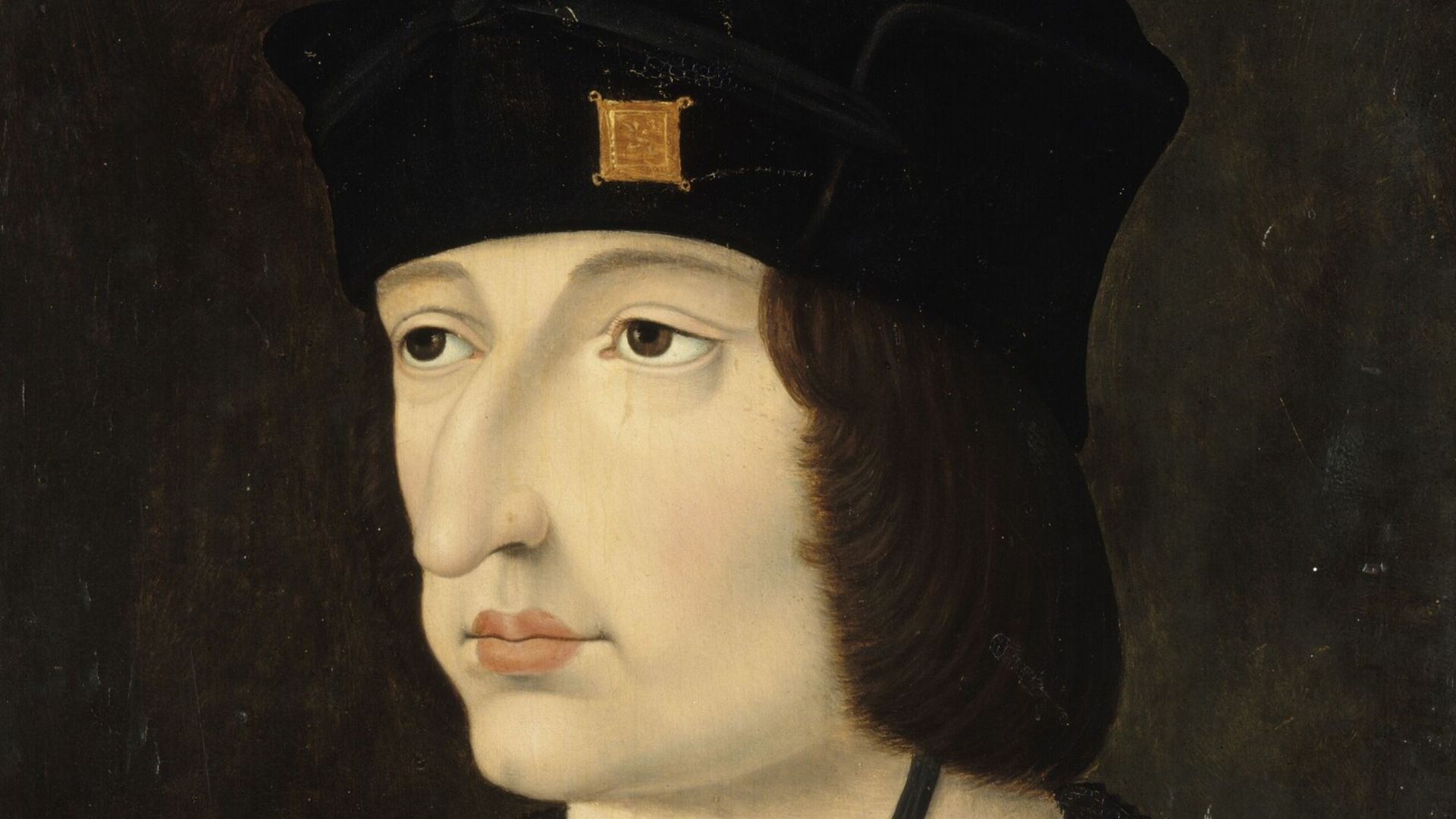 anonymous / After Jean Perréal, Wikimedia Commons
anonymous / After Jean Perréal, Wikimedia Commons
6. She Lost Another Mother
As a man and king, Louis XI never would have put much time or energy into the raising of this young woman. Therefore, Margaret would have likely been placed in the household of Charlotte of Savoy, now the Queen Mother, regardless. The real setback came when Charlotte too departed this world by the end of 1483.
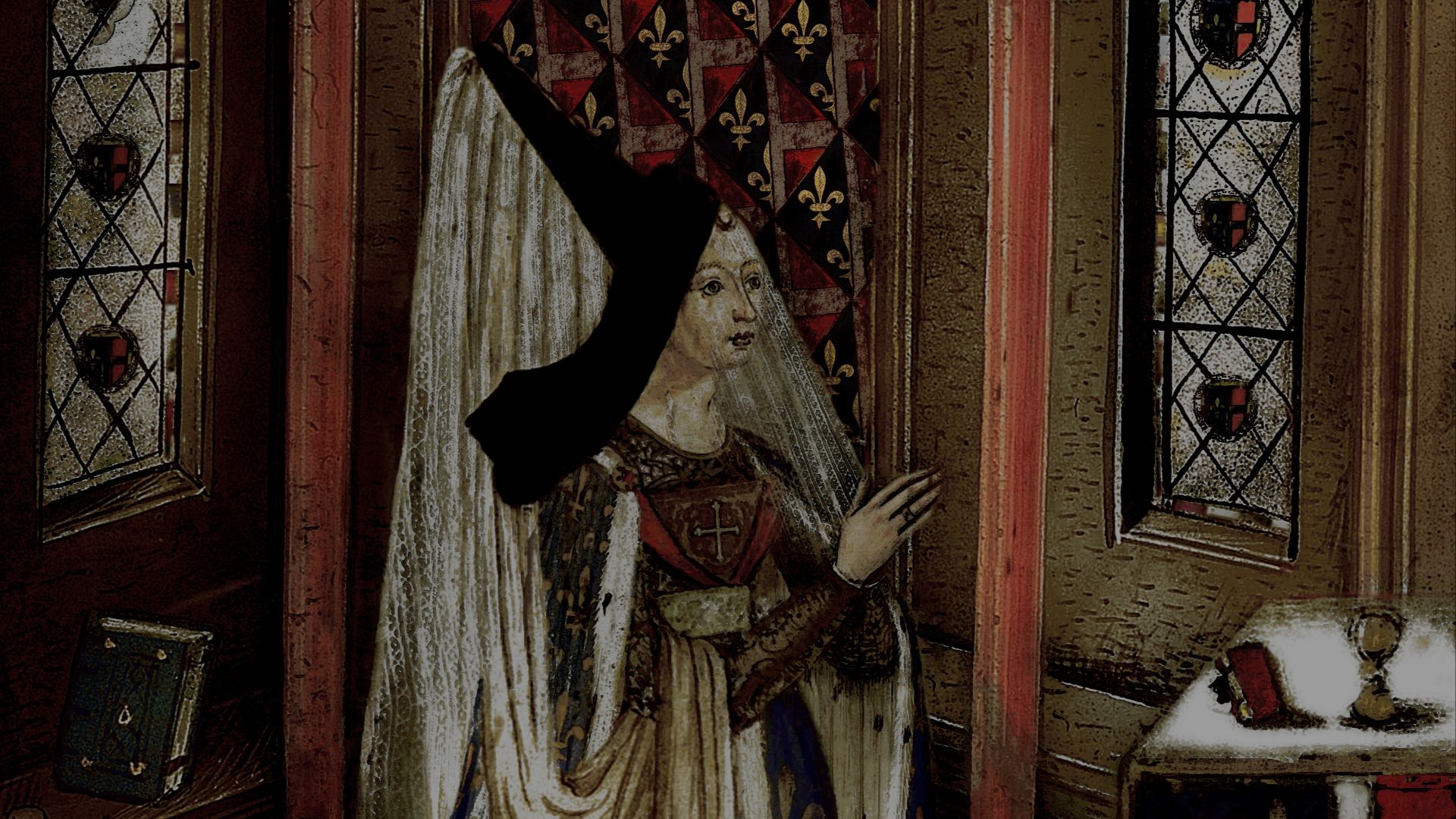 Unknown authorUnknown author, Wikimedia Commons
Unknown authorUnknown author, Wikimedia Commons
7. She Was A Daughter Of France
France intended to raise Margaret as “fille de France,” otherwise known as a “daughter of France”. Given her young age, the French royal family could mold her into the perfect future Queen. They had no intention of disregarding this plan simply because the Queen Mother ceased to breathe. They just needed to find another person to take on the responsibility of Margaret.
8. Her Sister-In-Law Took Over
Anne de Beaujeu, the sister and regent of Charles, became that person. They placed Margaret within Anne’s household, and the governess Madame de Segre provided Margaret with a superior education along with several other noble children, including her future sister-in-law, Louise of Savoy. Margaret’s future should have been set in stone, if not for a wild twist.
Young Charles made a diabolical decision that turned everything on its head.

History's most fascinating stories and darkest secrets, delivered to your inbox daily.
9. She Was Raised Among Nobles
Raised alongside his family as she had been, Margaret found genuine affection for Charles. Unfortunately, if Charles shared that affection, it did not preserve their contracted engagement. Due to the politics of the time, Charles opted to disregard their treaty and instead married Anne, Duchess of Brittany—Margaret’s stepmother.
10. Her Marriage Didn’t Happen
The chain of events that led to Margaret being refused the French throne—and Anne, Duchess of Brittany, rising to queen instead—are complicated. Anne married Margaret’s father, Maximillian, by proxy in December 1490, thus making her Margaret’s stepmother. What should have been an innocent exchange of vows quickly unraveled, upending Margaret’s life yet again.
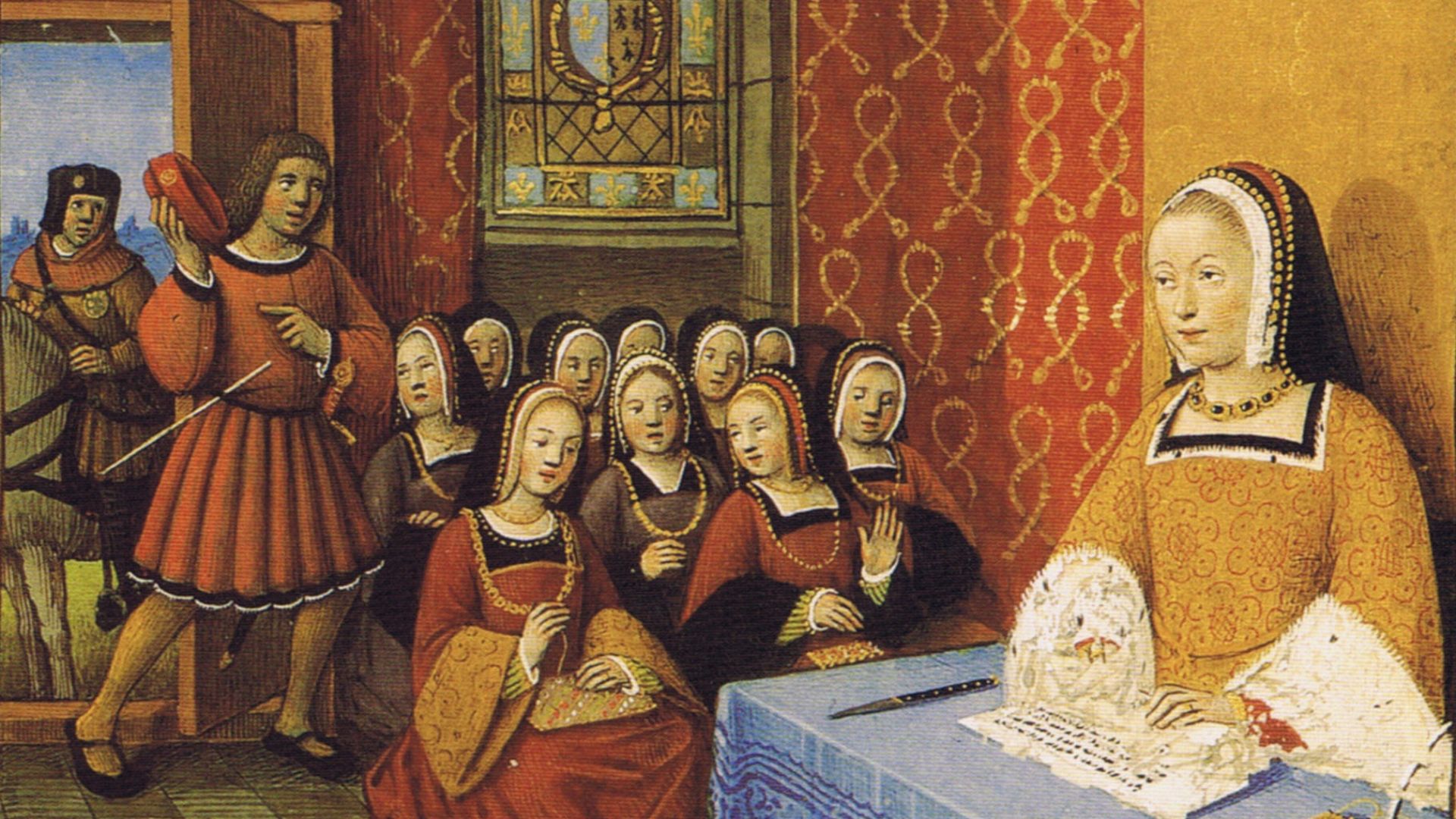 Jean Bourdichon, Wikimedia Commons
Jean Bourdichon, Wikimedia Commons
11. Her Father Spoiled Everything
Politics during this period was particularly complicated, with numerous feuds over land thinly held together by hastily-made treaties. In Anne marrying Maximillian, Charles saw this as a direct attack upon France. Therefore, he stormed into Rennes, where Anne was, and demanded she revoke her marriage to Maximillian and marry him instead.
She agreed, thereby pulling apart the tightly bound bow that held Margaret's life together.
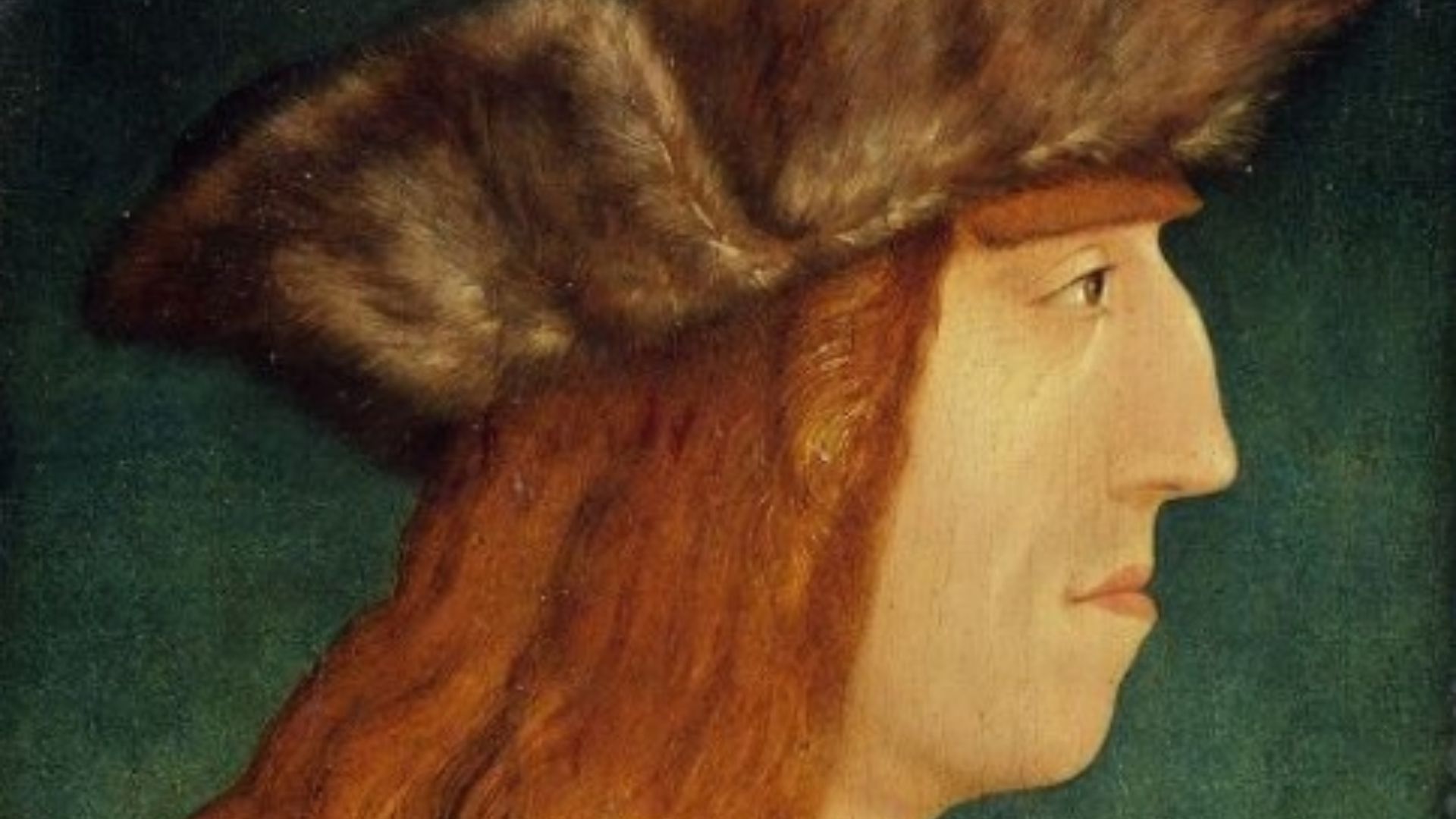 Unknown artist from Albrecht Dürer's circle, Wikimedia Commons
Unknown artist from Albrecht Dürer's circle, Wikimedia Commons
12. She Couldn’t Go Home
The marriage between Anne and Charles occurred in the fall of 1491. As a result, the French court immediately ceased to treat Margaret as their future queen. Yet, she arrived in France at the age of two; it was the only home that she had ever known. Moreover, due to politics, she could not leave for another two years, whether she wanted to or not.
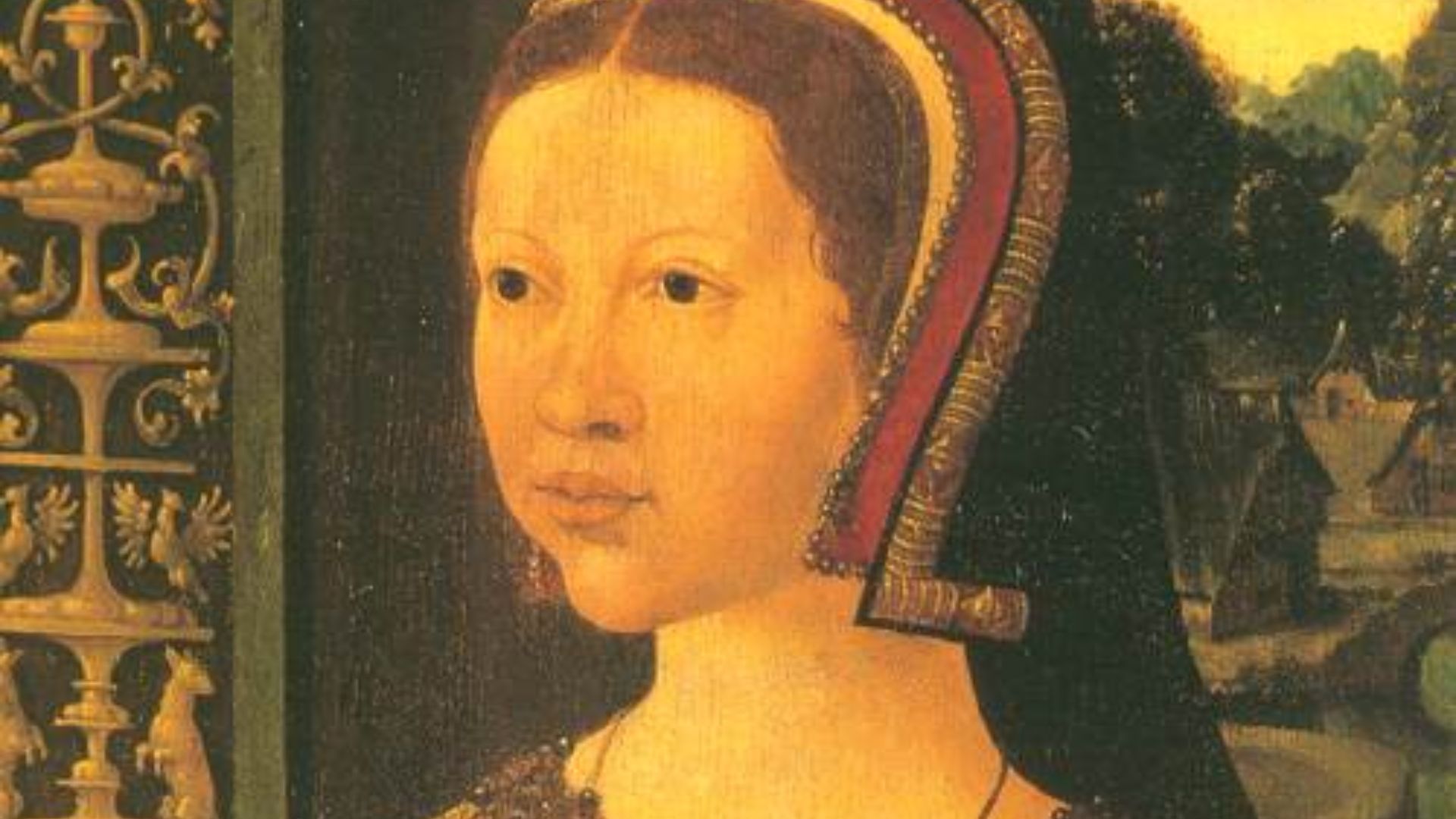 Jacob Cornelisz van Oostsanen, Wikimedia Commons
Jacob Cornelisz van Oostsanen, Wikimedia Commons
13. She Never Forgot
Once Charles and Maximillian signed the Treaty of Senlis, Margaret went home. However, her time in France left a lasting impression on her. She’d cared deeply for Charles; to be thrown away because another woman served his purposes better felt like an utter betrayal.
Margaret never forgot nor forgave, harboring a grudge towards Charles’s family, the House of Valois, long after Charles's passing. At 13, Margaret started again.
 Carlodangio, CC BY-SA 4.0, Wikimedia Commons
Carlodangio, CC BY-SA 4.0, Wikimedia Commons
14. Her Father Bargained Her Again
Following the end of her agreement with Charles and the signing of the Treaty of Senlis, Margaret returned to the Netherlands for the first time since the age of two. No contact had existed between her and her father in all of that time. Despite this, they struck up a congenial relationship. However, even if they had not, it wouldn’t have mattered. Margaret did not remain in the Netherlands long.
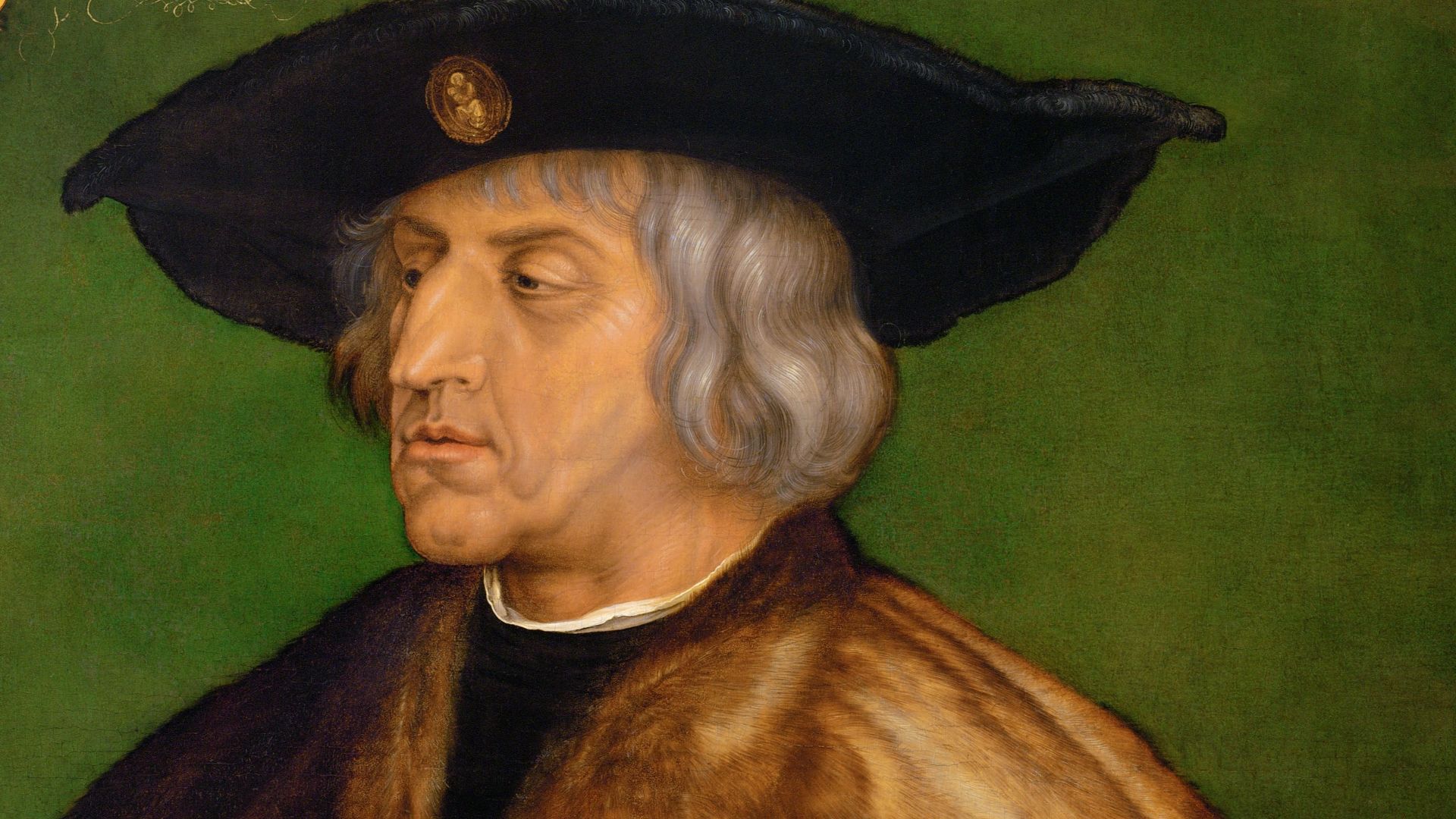 Albrecht Dürer, Wikimedia Commons
Albrecht Dürer, Wikimedia Commons
15. She Had Another Arrangement
Having failed to use her to secure a connection with the French monarchy, Maximilian started again. This time, Maximilian intended to use Margaret to forge an alliance with Isabella I of Castile and Ferdinand II of Aragon. He arranged to settle the matter of both his children. Margaret went to Spain to marry John, Prince of Asturias, while John’s sister, Joanna of Castile, came to the Netherlands to marry Margaret’s elder brother, Philip.
This marriage, too, appeared doomed from the start.
16. She Married Quickly
Now 16, a delay was not needed; Margaret married John by proxy in Belgium, eliminating the chance that John could cast her aside as Charles had done. But then tragedy struck. When her ship got caught in a storm in the Bay of Biscay, Margaret began to doubt whether she would make it to Spain after all.
 Ursula Corbero's every costume as Margaret of Austria in 'Isabel' & 'La Corona Partida', Lili1127
Ursula Corbero's every costume as Margaret of Austria in 'Isabel' & 'La Corona Partida', Lili1127
17. She Feared The End
Fearing that the storm meant it was time for her end, Margaret prepared. She went so far as to pen her epitaph, showing striking humor as well as a sharp awareness of her life to date: “Here lies Margaret, the willing bride, / Twice Married—but a virgin when she died”. Although the next life circled her like a hawk, Margaret made it to Spain... and her next marriage.
 Ursula Corbero's every costume as Margaret of Austria in 'Isabel' & 'La Corona Partida', Lili1127
Ursula Corbero's every costume as Margaret of Austria in 'Isabel' & 'La Corona Partida', Lili1127
18. Her Marriage Dragged On
Thanks to the storm, Margaret’s journey to Spain seemed to never end. Despite leaving in late 1496, Margaret found herself in Southampton, England in February, 1497, waiting for the weather to clear and finally make her way to Spain and her husband. Eventually, she made it and married John on April 3, 1497. Unfortunately, Margaret’s luck had yet to change.
 Ursula Corbero's every costume as Margaret of Austria in 'Isabel' & 'La Corona Partida', Lili1127
Ursula Corbero's every costume as Margaret of Austria in 'Isabel' & 'La Corona Partida', Lili1127
19. She Lost Again
John lived for six months following their marriage. On October 4, 1497, he succumbed to fever, leaving Margaret yet again trapped in another country that had intended to see her as queen and now did not know what to do with her. Fortunately, this time Margaret’s husband left something behind to remember him by: Margret carried his baby—for a time, at least.
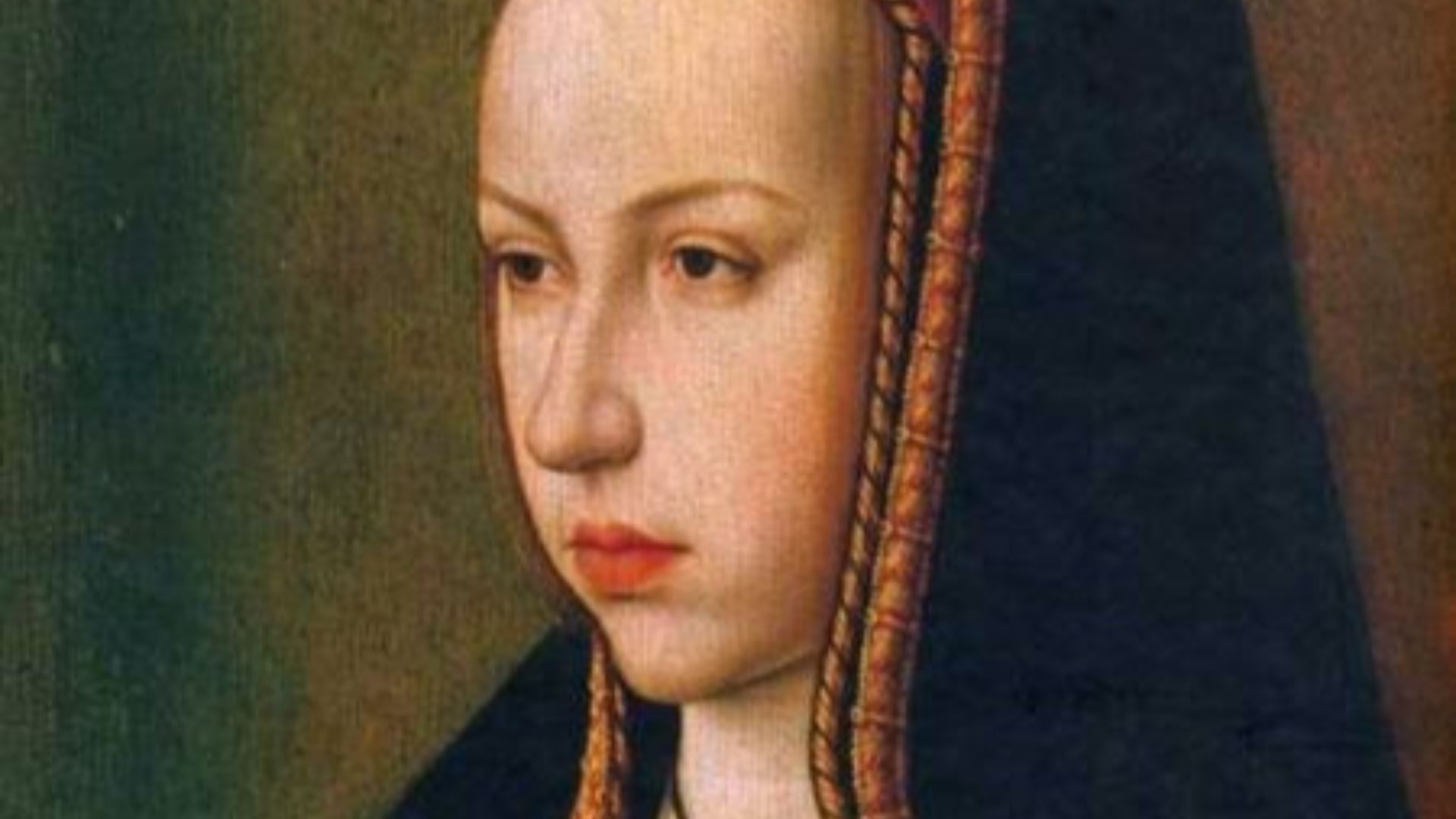 Circle of Jean Hey, Wikimedia Commons
Circle of Jean Hey, Wikimedia Commons
20. Her Tragedy Continued
Tragedy seemed to stalk Margaret in a terrible way. April 1498 saw Margaret go into labor prematurely, and she birthed a stillborn daughter. No longer a wife nor a mother, Castile had little use for Margaret beyond what she offered her then-teenage sister-in-law, Catherine of Aragon.
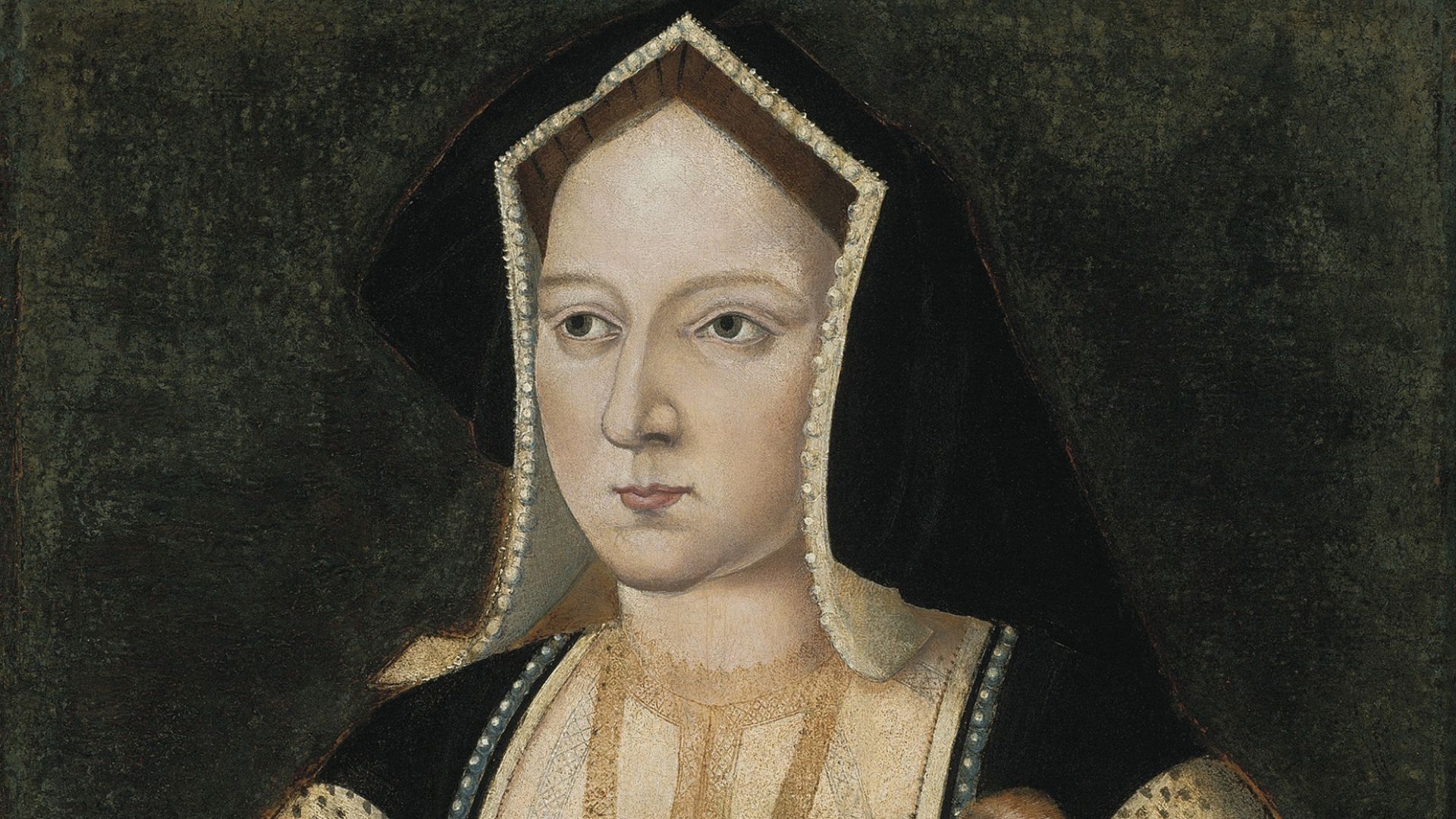 Lucas Horenbout, Wikimedia Commons
Lucas Horenbout, Wikimedia Commons
21. Her Brother Needed Her
Margaret taught Catherine of Aragon French before leaving for home in September 1499. Spain and France had no use for Margaret—but, finally, her brother found a way to put her to good use. His wife, Joanna, birthed their son, and Philip wrote to his sister, begging her to return home to “hold the child in her hands at the font during the baptism”.
With two failed marriages, it seemed that being a godmother and aunt may have been all Margaret was good for—until another opportunity arose.
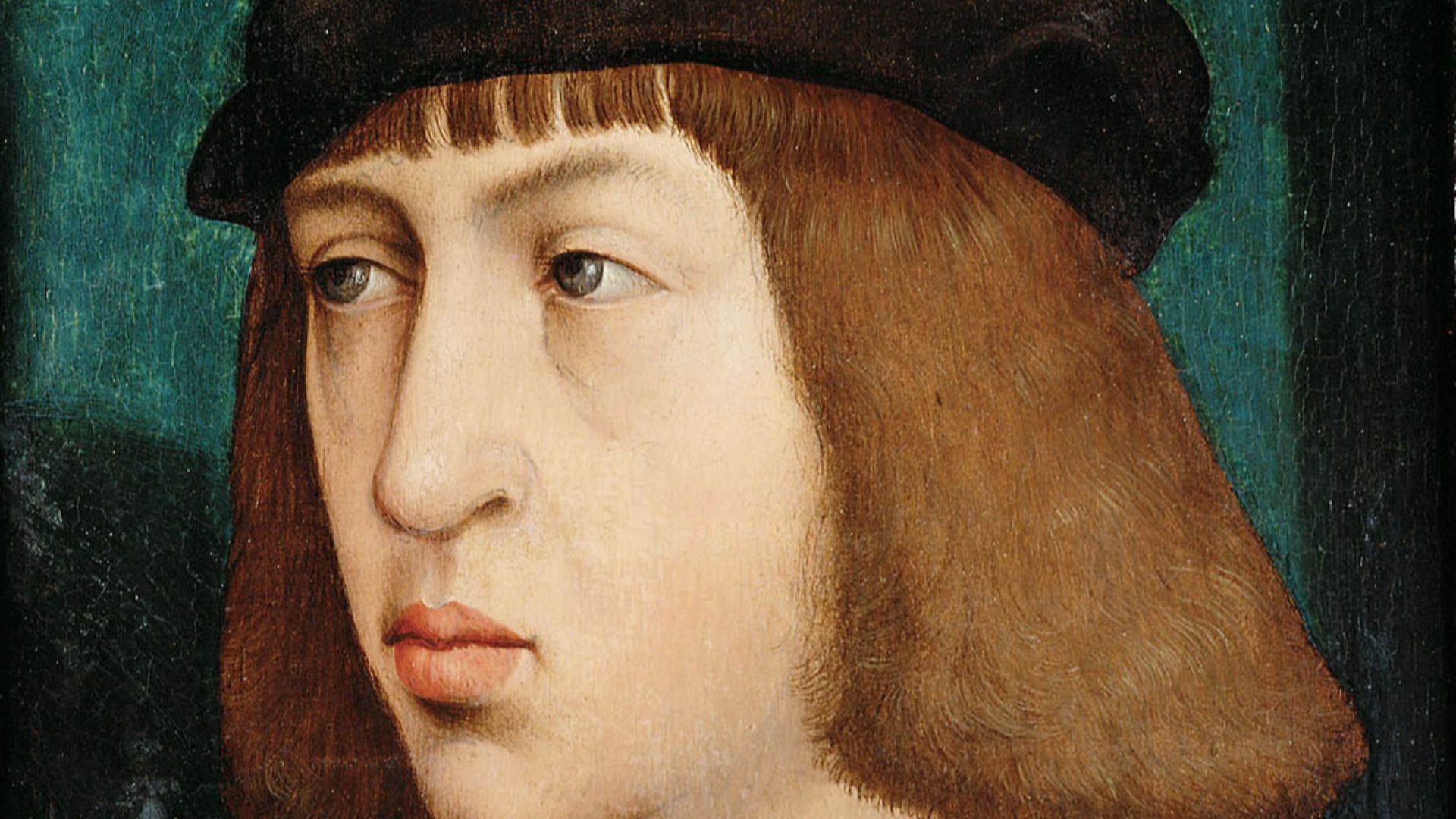 Attributed to Juan de Flandes, Wikimedia Commons
Attributed to Juan de Flandes, Wikimedia Commons
22. She Left Again
Margaret’s destiny included one more marriage. After all, by 1501, despite her tumultuous life, Margaret was only 21 years old, the same age as her second husband (and third fiancé) Philibert II, Duke of Savoy. Again, the allegiance was political—Savoy held an integral role, geographically, in the feud between France and the Italian Habsburgs.
However, this time, Margaret finally seemed to get it right.
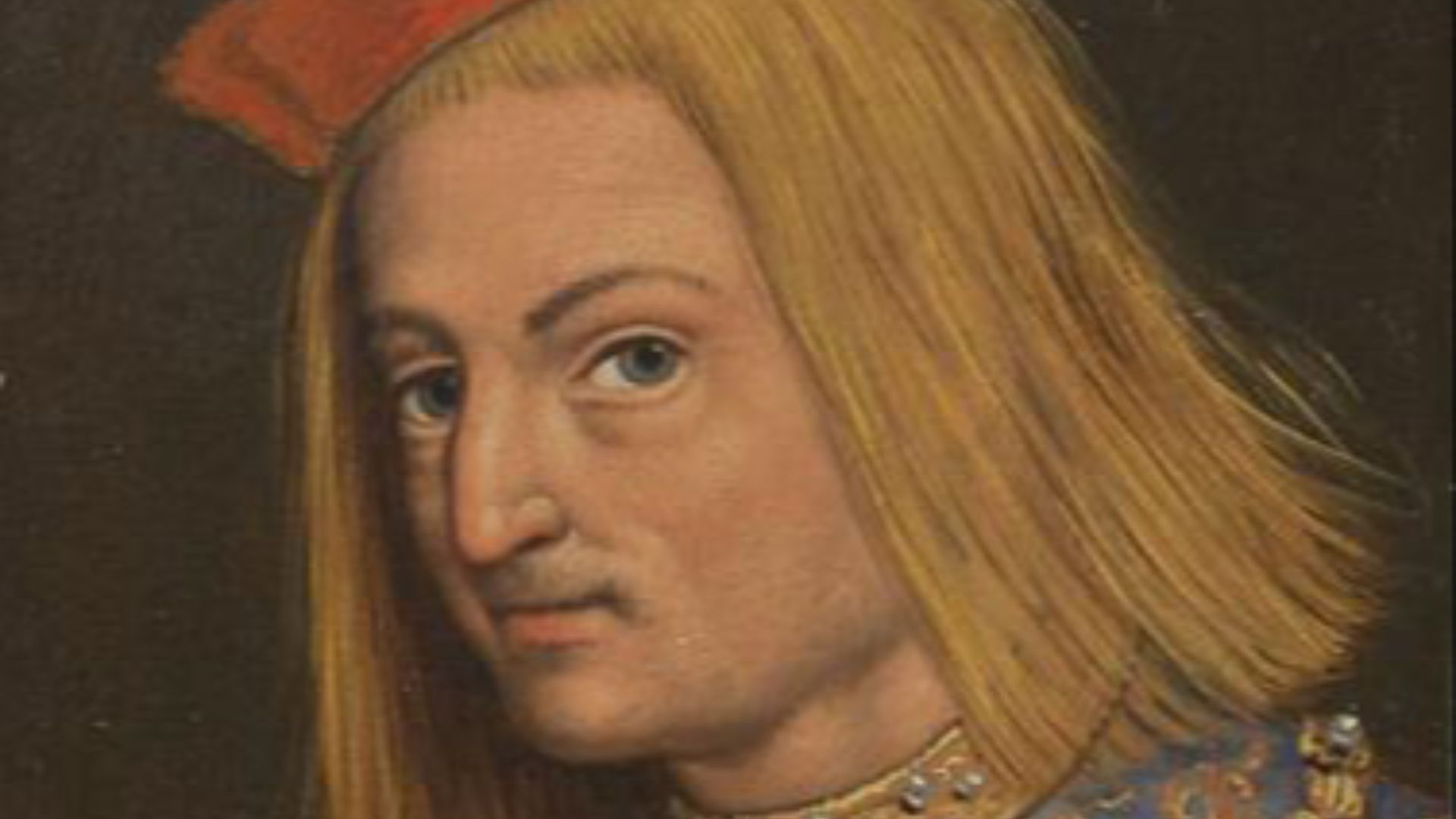 Antoni Boys, Wikimedia Commons
Antoni Boys, Wikimedia Commons
23. She Found An Equal
Both Philibert and Margaret had been married twice already, Philibert’s first wife being seven years younger than he was. They appeared to reach this union as equals (perhaps relieved to finally have a spouse of similar age), and their marriage was stable. More than stable: This time, Margaret found a spouse whom she cared for. She fought for Philibert in a way she hadn’t fought for the others.
24. She Used Her Resources
Savoy had a crisis of leadership when Margaret arrived. René, Philibert’s illegitimate half-brother controlled the Savoy government. Margaret did not let that stand. She used all of her resources, including the substantial clout provided by her father, the Holy Roman Emperor, overlord of Savoy, to remove any legitimacy René had.
Margaret couldn’t have been more successful if she tried.
 Ursula Corbero's every costume as Margaret of Austria in 'Isabel' & 'La Corona Partida', Lili1127
Ursula Corbero's every costume as Margaret of Austria in 'Isabel' & 'La Corona Partida', Lili1127
25. She Took Charge
Margaret succeeded in naming René a traitor, forcing him to flee Savoy and seek refuge with an old acquaintance of Margaret’s, her old schoolmate and sister-in-law, Louise of Savoy. With René out of the way, Margaret stepped in and took control of the government. With Philibert satisfied with his hobbies alone, Margaret took the reins.
She’d finally found a place and a man to suit her. However, tragedy still hovered around her like a cloud.
26. She Lost Again
Margaret spent three years with Philibert before he succumbed to pleurisy. Unlike the passing of her first husband, who might as well have been a stranger to Margaret for as long as they had been together, grief struck Margaret following Philibert’s passing. If Philibert was gone, then Margaret did not wish to live either.
 Ursula Corbero's every costume as Margaret of Austria in 'Isabel' & 'La Corona Partida', Lili1127
Ursula Corbero's every costume as Margaret of Austria in 'Isabel' & 'La Corona Partida', Lili1127
27. She Wouldn’t Go On
In response to Philibert’s loss, Margaret did something utterly heartbreaking: She hurled herself out of a window. Fortunately, she survived. While Margaret managed to carry on after Philibert’s loss, she never forgot him. In fact, she went to peculiar, even disturbing by modern standards, lengths to keep him with her.
28. She Held Him Close
Margaret didn’t want to let Philibert go. Members of the court persuaded her to bury him, but Margaret kept part of Philibert with her always. She embalmed his heart to preserve it and carry him with her. Named “Dame de Deuil” or “Lady of Mourning” by her court historian, Margaret embodied her loss—and, unlike in the past, she was in no rush to return home.
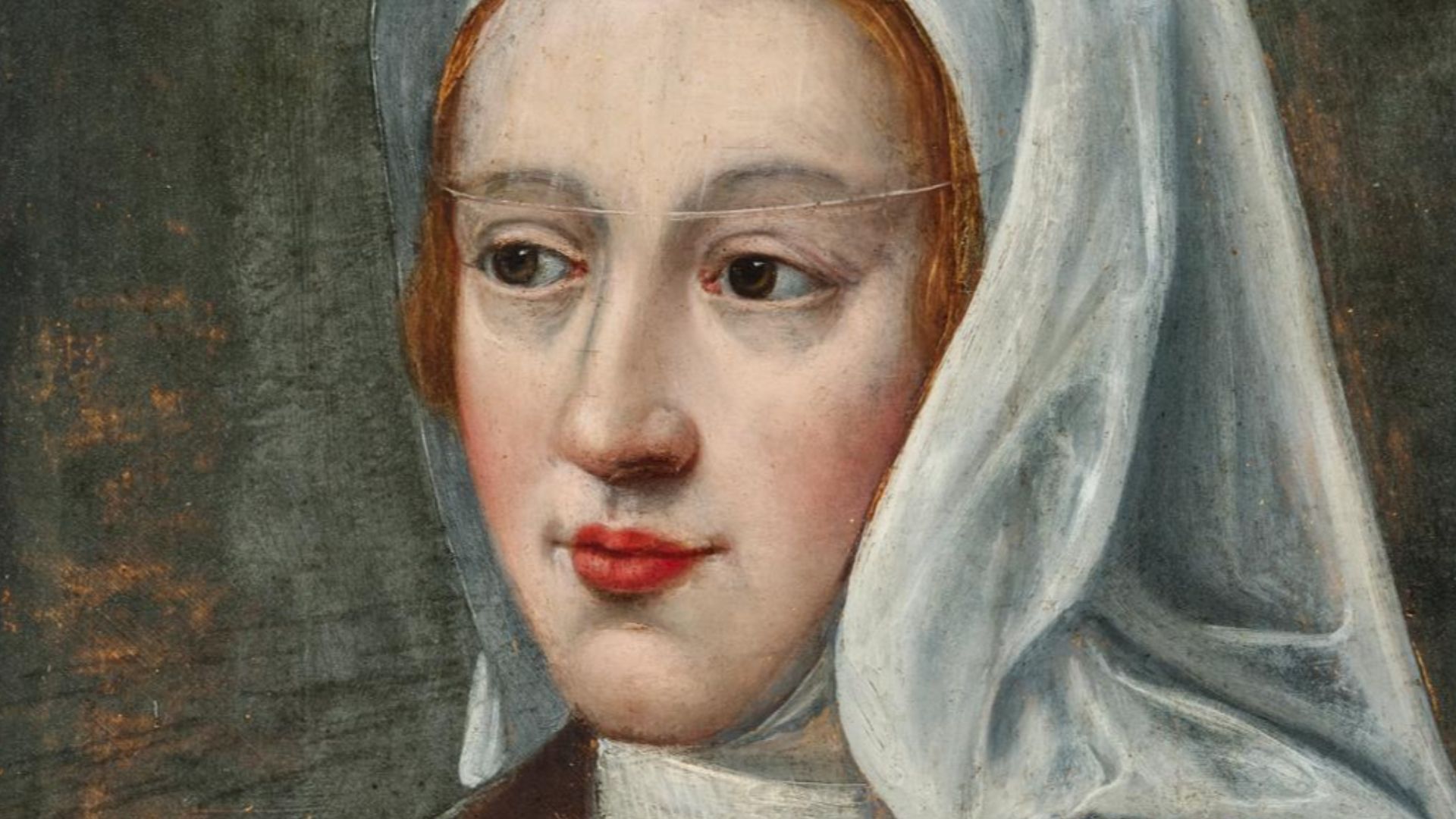 Follower of Bernard van Orley, Wikimedia Commons
Follower of Bernard van Orley, Wikimedia Commons
29. She Wouldn’t Leave
Margaret remained in Savoy for two years; during this time, as Philibert’s widow, her primary project was the construction of the Royal Monastery of Brou—designed to house Philibert’s remains, as well as his mother's and, when the time came, Margaret’s own. The evidence made it clear that Margaret had no intention of leaving Philibert or his home. However, her father and brother had other plans.
 Marmontel, CC BY 2.0, Wikimedia Commons
Marmontel, CC BY 2.0, Wikimedia Commons
30. Her Family Plotted Again
Briefly, in 1505, Margaret’s brother and father attempted to hatch another plan for Margaret’s future. Despite being once jilted and twice widowed, Margaret was 25. Maximilian and Philip tried to arrange yet another marriage for Margaret. This time to the reigning king of England: 48-year-old Henry VII.
31. Margaret Refused
Although Margaret refused to marry Henry VII, the two men in her life sent her portrait to England anyway. The portrait was likely five years old, and, with Margaret refusing to participate, little came of the arrangement. Henry, whose first wife had passed two years earlier, never remarried. Margaret likely would have spent her entire life in Savoy if the Grim Reaper hadn’t struck again.
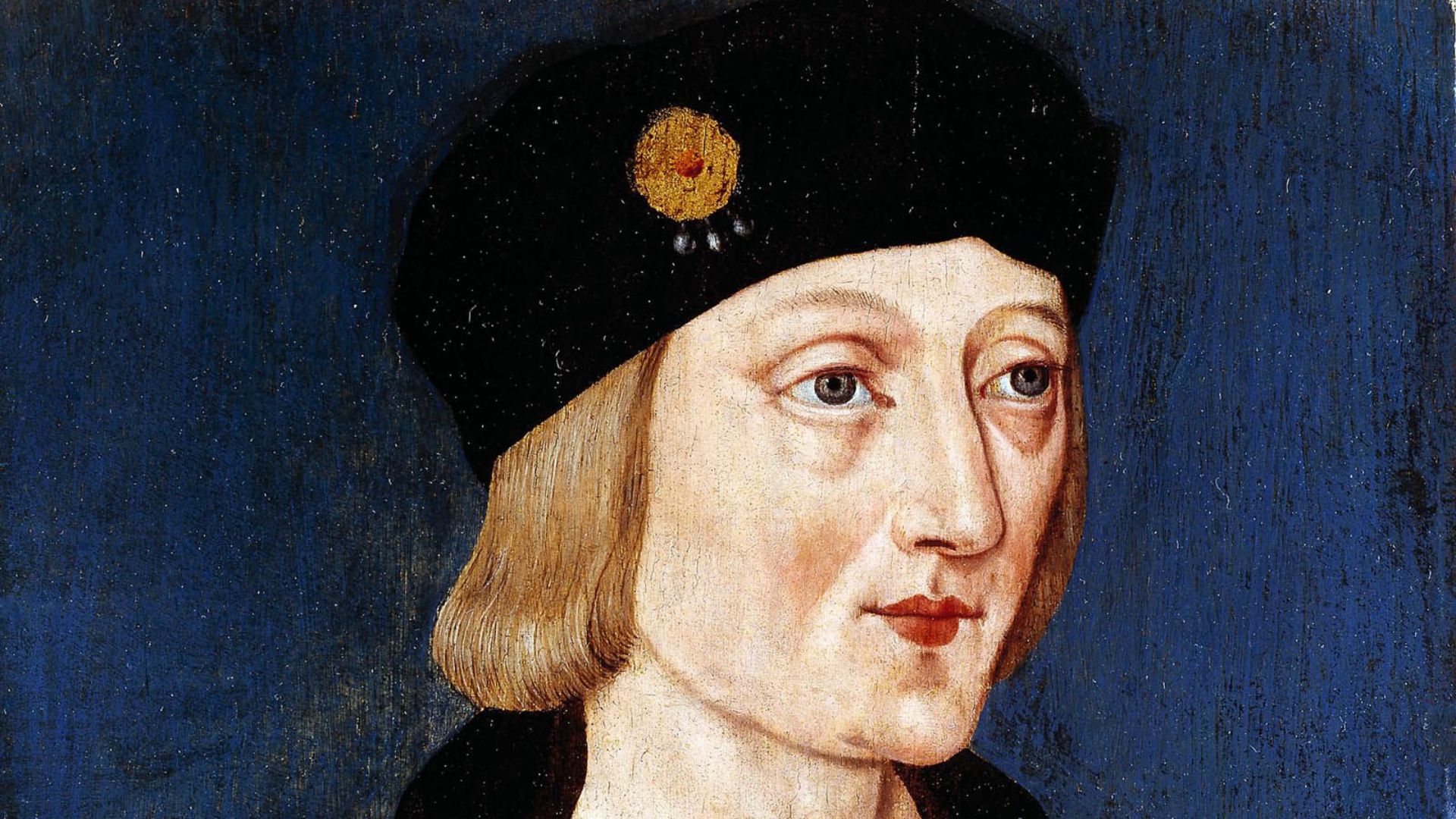 English School, Wikimedia Commons
English School, Wikimedia Commons
32. Her Family Faced A Problem
In 1504, Queen Isabella of Portugal passed. With her younger brother, Margaret’s first husband John, already gone and Isabella's son taken along with him, the crown went to Joanna and Margaret’s brother, Philip. However, tragedy lay in wait. Philip perished suddenly a year later, leaving the family with a large problem: Their six-year-old son Charles was now king, and Joanna was too unstable to act as his regent.
33. Her Father Needed Her
Margaret’s father couldn’t step in; to govern the Low Lands, they demanded you remain in the region. As Holy Roman Emperor, Maximilian faced preoccupations elsewhere. He needed his daughter. Margaret returned to the Netherlands following Philip’s passing at the request of her father.
For the first time, Margaret stepped into her own power, no longer needing a husband to justify her worth.
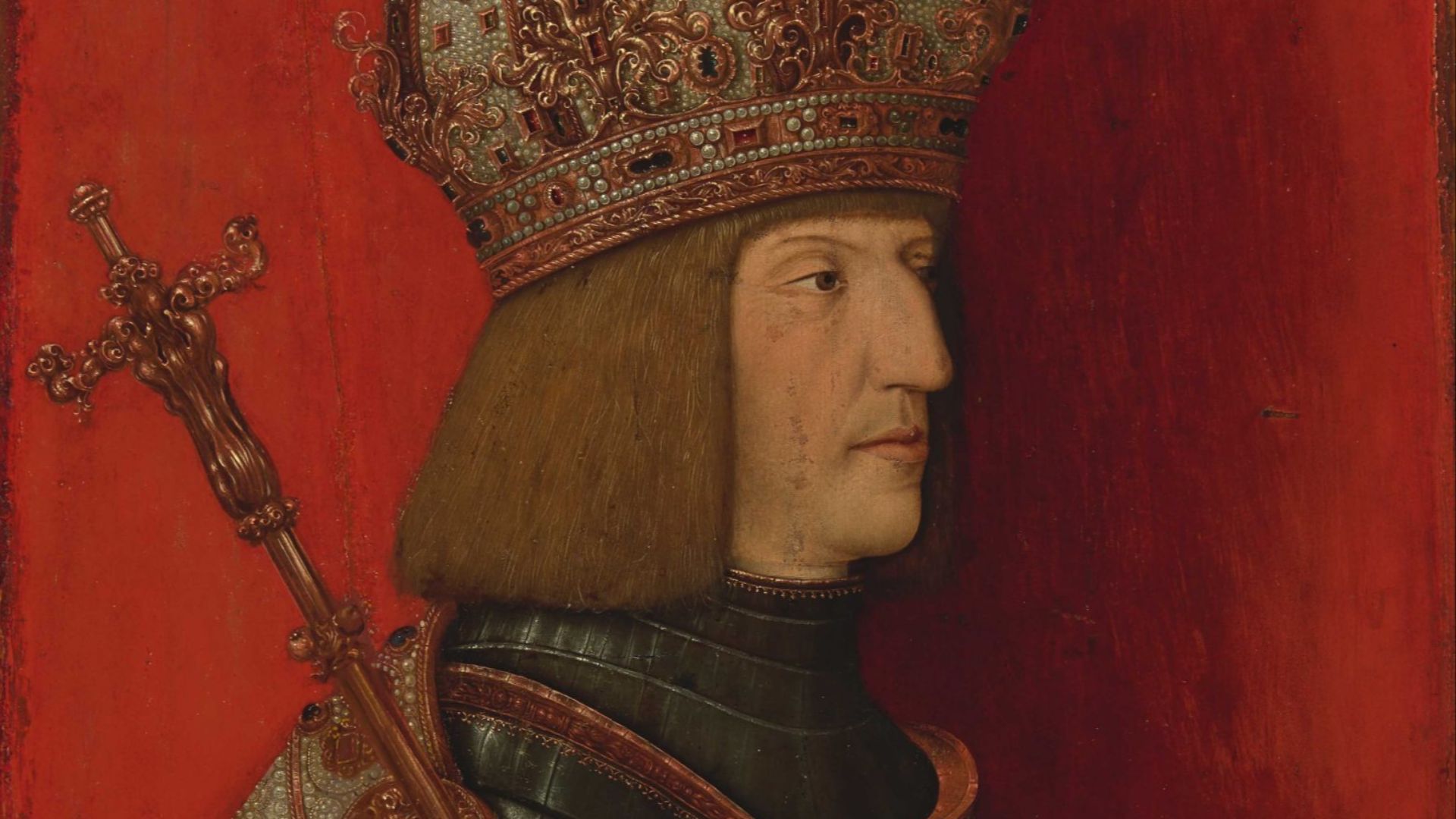 Bernhard Strigel, Wikimedia Commons
Bernhard Strigel, Wikimedia Commons
34. She Took Charge
Without another regent available, Maximilian named Margaret governor of the Low Countries and guardian of her brother’s children, including Charles. Only Philip’s second son, Ferdinand, remained in Spain under the care of Joanna’s father, Ferdinand II of Aragon. After years of being exchanged for clout, Margaret finally had power of her own. However, it wasn’t without its issues.
 Ursula Corbero's every costume as Margaret of Austria in 'Isabel' & 'La Corona Partida', Lili1127
Ursula Corbero's every costume as Margaret of Austria in 'Isabel' & 'La Corona Partida', Lili1127
35. She Made History
Elected by the representative assembly of Franche-Comte, and with her title made official in 1509, Margaret became the only woman elected as the ruler of the Low Countries. However, some report that Margaret’s turbulent life posed problems. After all, despite being born in Brussels, how much time had Margaret spent in the Netherlands? How could the people expect her to rule?
 Damouns, CC BY-SA 3.0, Wikimedia Commons
Damouns, CC BY-SA 3.0, Wikimedia Commons
36. Her Rule Was Questioned
Despite some reports indicating that her childhood in France made people view her as a “foreigner," other historians disagree and state that Margaret, Philip, and Charles were all viewed as natives of the Netherlands. Regardless of views, Margaret ruled with certainty and conviction, which paved the way for all female rulers to come.
37. Her Nephew Needed Her
Charles named Margaret his governor-general in 1520 to honor her years of service. This made her the only regent he ever re-appointed indefinitely, and it also aids in the opinion held by some that Margaret acted as the equivalent of Queen consort in the political sense for both her father and her nephew.
She guided the Netherlands with a level head, seeing them through much strife and conflict.
38. She Navigated Conflict
Margaret navigated many conflicts during her time as regent and governor of the Low Countries. This turmoil started early in her metaphorical reign, with conflict arising over relationships with France. France expected Charles to pay homage to the French ruler. This feud would have gotten out of control if not for Margaret’s calm and controlled thinking.
 Ursula Corbero's every costume as Margaret of Austria in 'Isabel' & 'La Corona Partida', Lili1127
Ursula Corbero's every costume as Margaret of Austria in 'Isabel' & 'La Corona Partida', Lili1127
39. She Negotiated Peace
Margaret convinced Maximilian to finish the conflict with King Louis XII; she traveled to Cambrai to contribute to the creation of the League of Cambrai. Through this, Margaret succeeded in providing a new target for the French: Northern Italy. She'd expertly dodged the threat of an invasion.
Unfortunately, more nations had their eyes on the Netherlands.
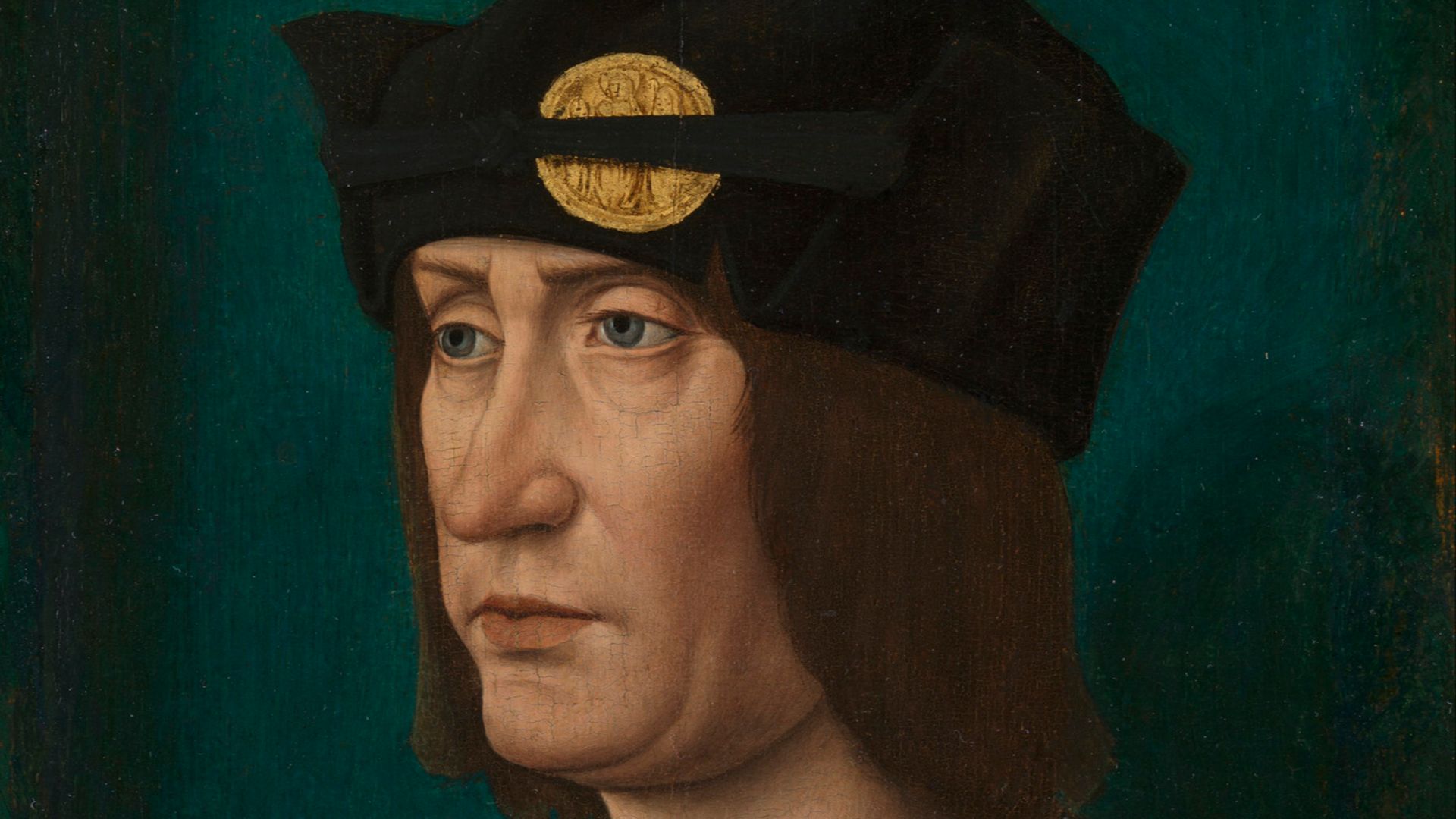 Workshop of Jean Perréal, Wikimedia Commons
Workshop of Jean Perréal, Wikimedia Commons
40. Her Own Nation Rebelled
The duchy of Guelders within the region of the Low Countries had long been a problem for the family. Both Maximilian and Philip fought them previously, and now Margaret was left to deal with the threat of another uprising. Although Margaret handled the feud with Guelders in the end, she saw no need to continue to waste her resources on conflicts. She set about changing that.
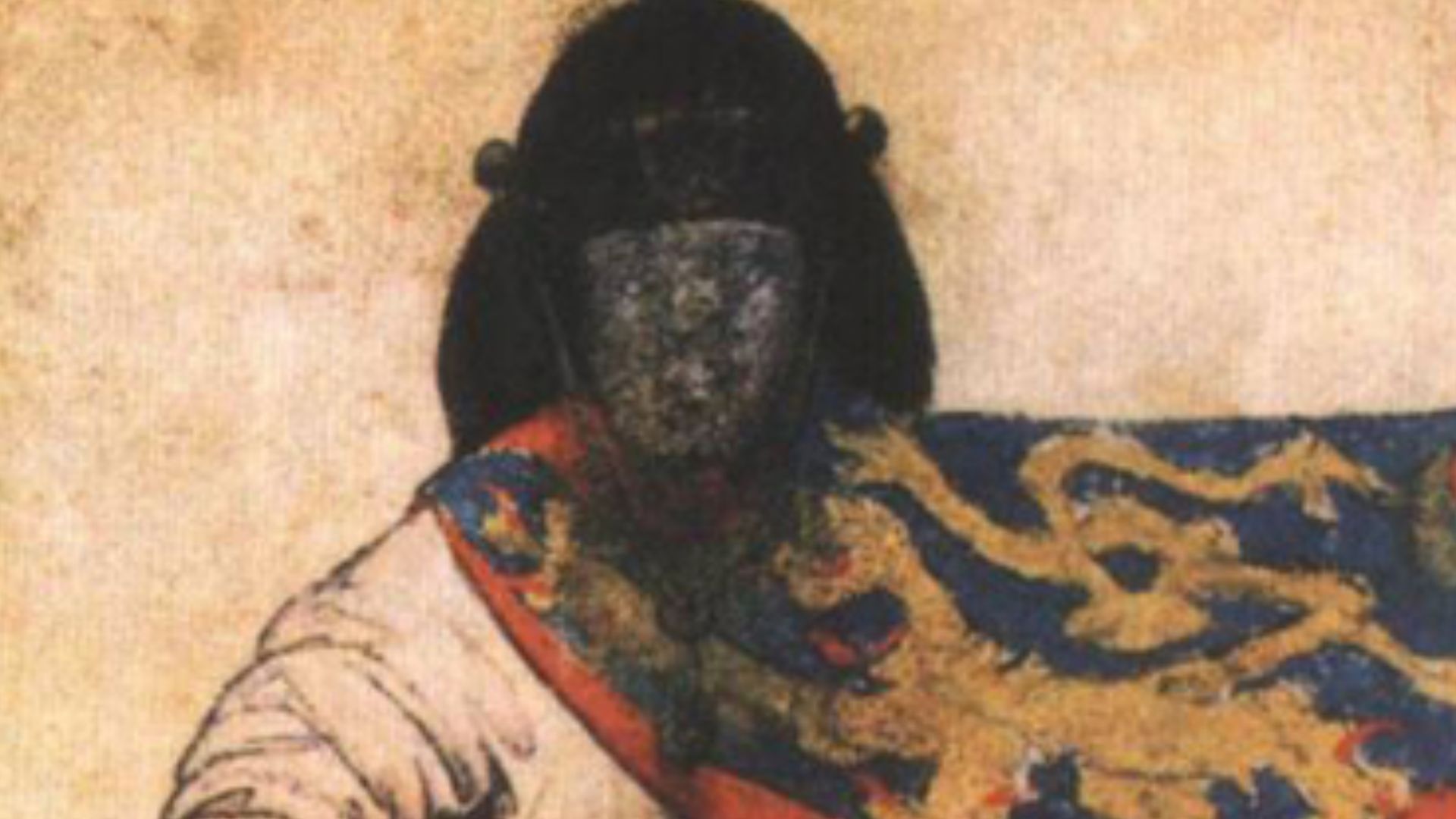 Claes Heynensoon, Wikimedia Commons
Claes Heynensoon, Wikimedia Commons
41. She Demanded Neutrality
By 1512, Margaret was done fighting with anyone who felt that they could take on the Netherlands. On the basis that the Netherlands operated through trade and peace, Margaret asserted that the nation was neutral. However, she continued using foreign armies and capital to wage conflict; the Netherlands just kept their names off of it.
This strategy of peace and negotiation proved extremely successful.
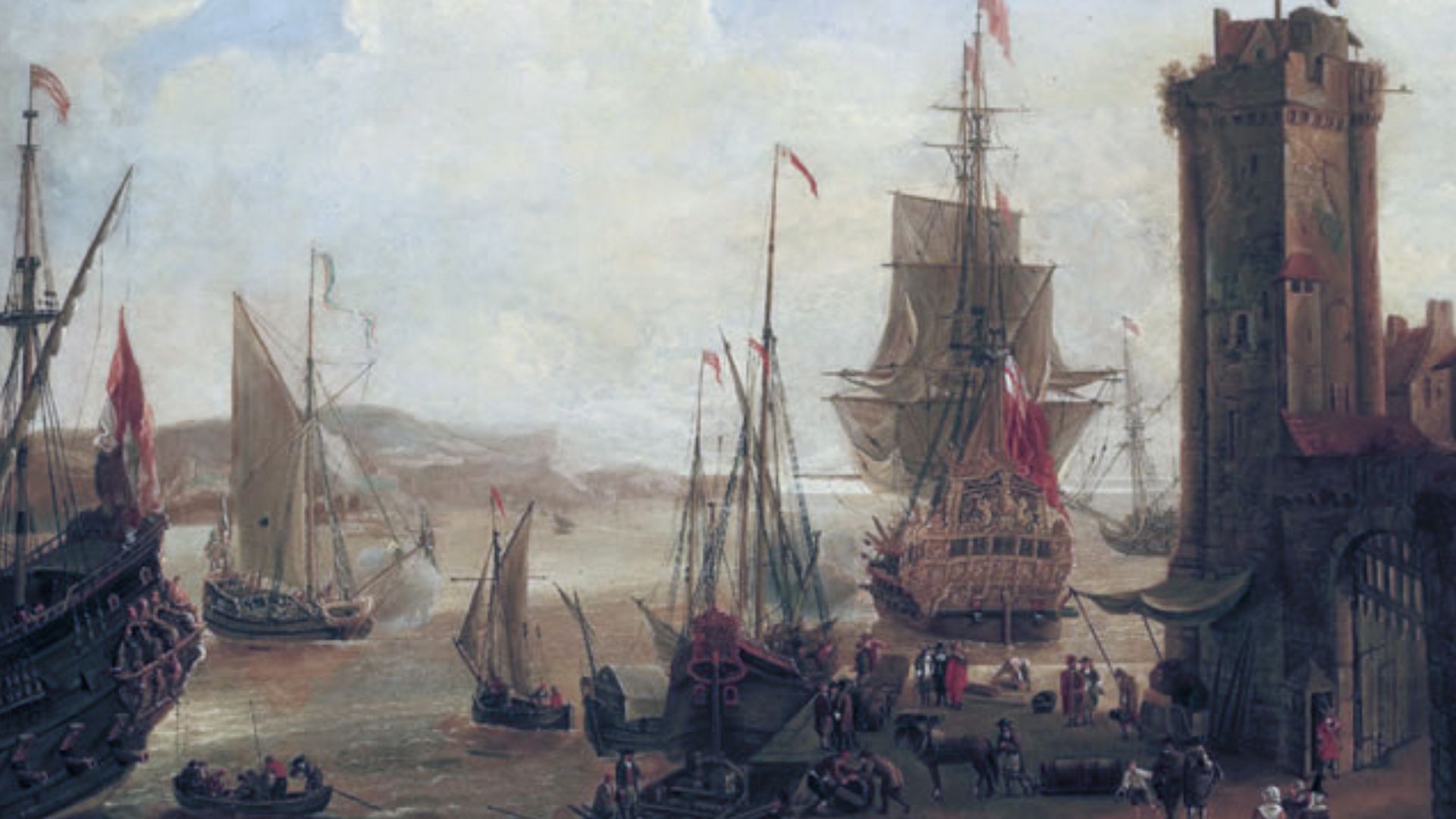 Jacob Knijff, Wikimedia Commons
Jacob Knijff, Wikimedia Commons
42. She United People
Margaret was an instrumental force for a multitude of reasons. She helped unite the Holy League: her father Maximilian, the Swiss, the pope, Ferdinand II of Aragon, and Henry VIII. But that wasn't all. She also helped ensure that Charles and not his younger brother succeeded Maximilian as Holy Roman Emperor.
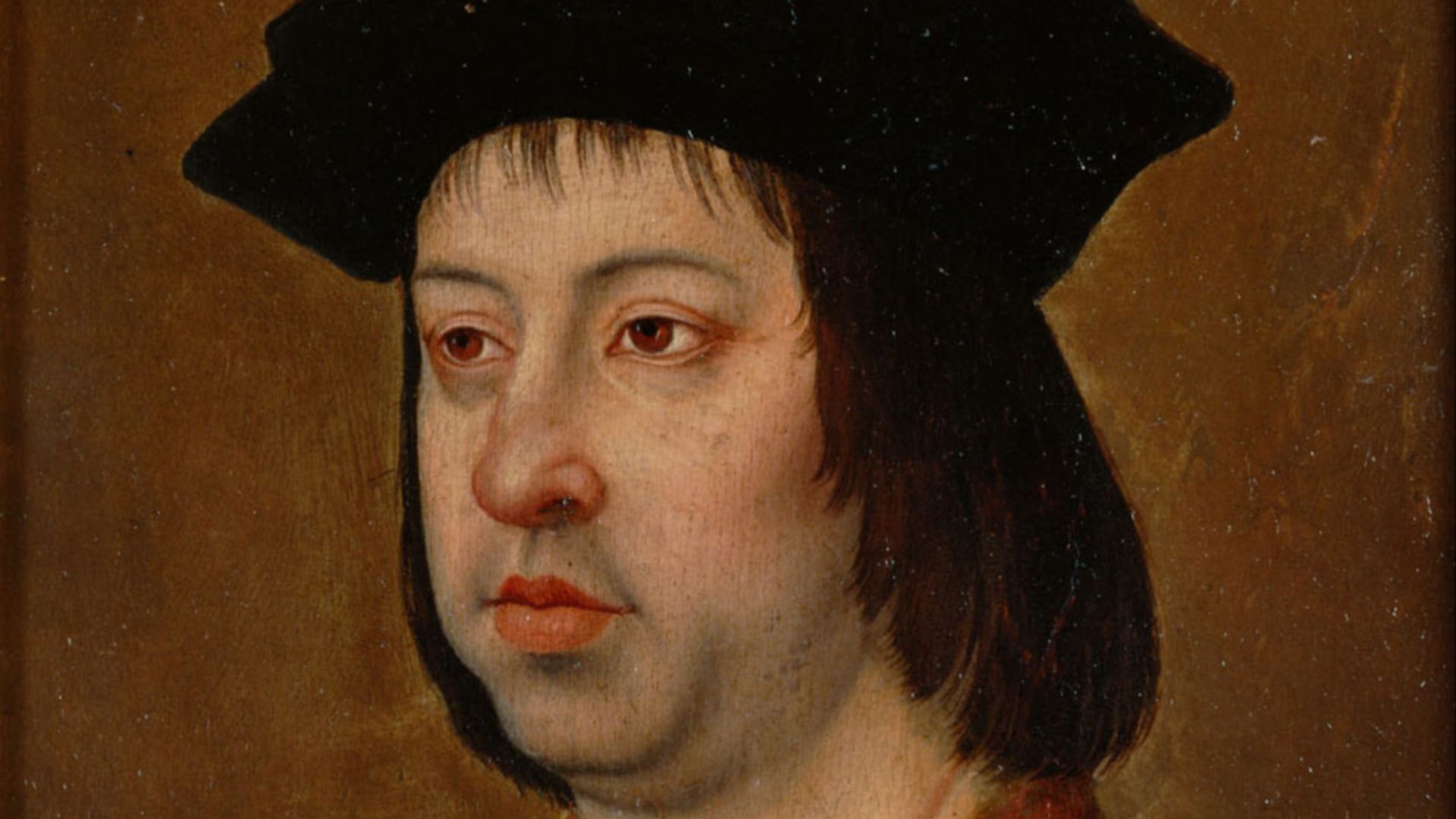 Michael Sittow, Wikimedia Commons
Michael Sittow, Wikimedia Commons
43. She Argued For Her Nephew
When Maximilian passed in 1519, there was opposition to 18-year-old Charles succeeding him. Some wanted his younger brother, Archduke Ferdinand, instead. France wanted their own candidate. Margaret skilfully navigated the election, using both diplomacy and a little bribery to see her ward succeed.
Of course, having long had a hand in his upbringing and reign, Margaret continued to influence him as the Holy Roman Emperor.
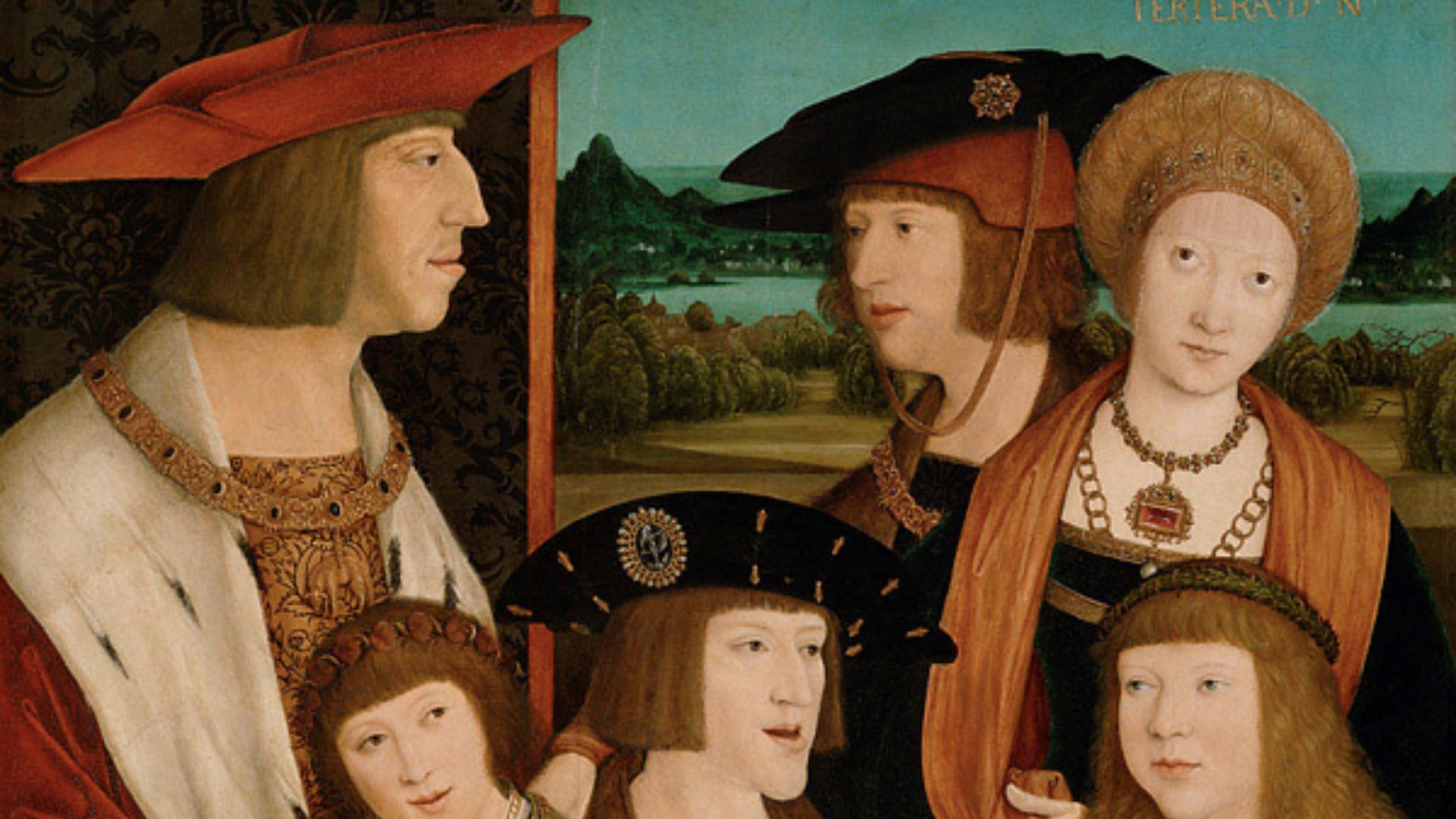 Bernhard Strigel, Wikimedia Commons
Bernhard Strigel, Wikimedia Commons
44. She Excelled At Diplomacy
Thanks to feuds that Charles inherited and the many kingdoms that were part of the Empire, invasion knocked on the door of the Netherlands again. Yet, Margaret proved yet again that she earned her position as the Governor of the Low Countries. Again, Margaret used her diplomacy to negotiate a peace treaty—along with a little help from an old friend.
 Ursula Corbero's every costume as Margaret of Austria in 'Isabel' & 'La Corona Partida', Lili1127
Ursula Corbero's every costume as Margaret of Austria in 'Isabel' & 'La Corona Partida', Lili1127
45. She Met An Old Friend
France had endured its series of births and passings since Margaret left. Francis I now ruled as king, and his mother held a lot of power. She acted as regent on her son’s behalf both early in his reign and at several points after. Margaret knew Francis’s mother well. It was none other than Louise of Savoy.
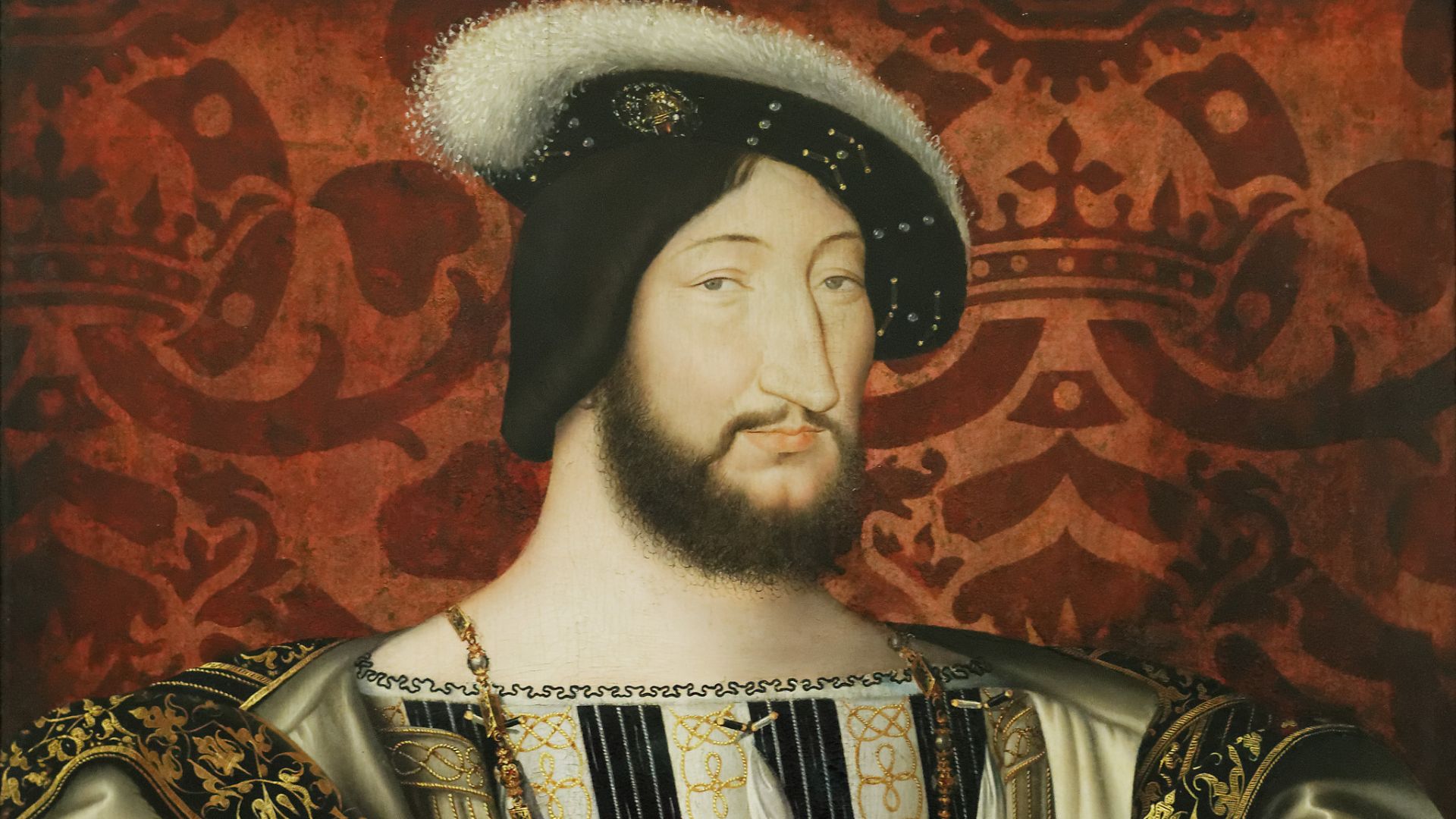 Jean Clouet, Wikimedia Commons
Jean Clouet, Wikimedia Commons
46. She United With France
Margaret and Louise had once shared a school room, and they now reunited again as equals, both women who had found power through the children in their lives. Together they negotiated a peace between their two nations, Louise even returning the lands that had come as part of Margaret’s dowry all those years ago.
At the top of her game, it seemed nothing could go wrong for Margaret—but fate had a brutal twist in store for her.
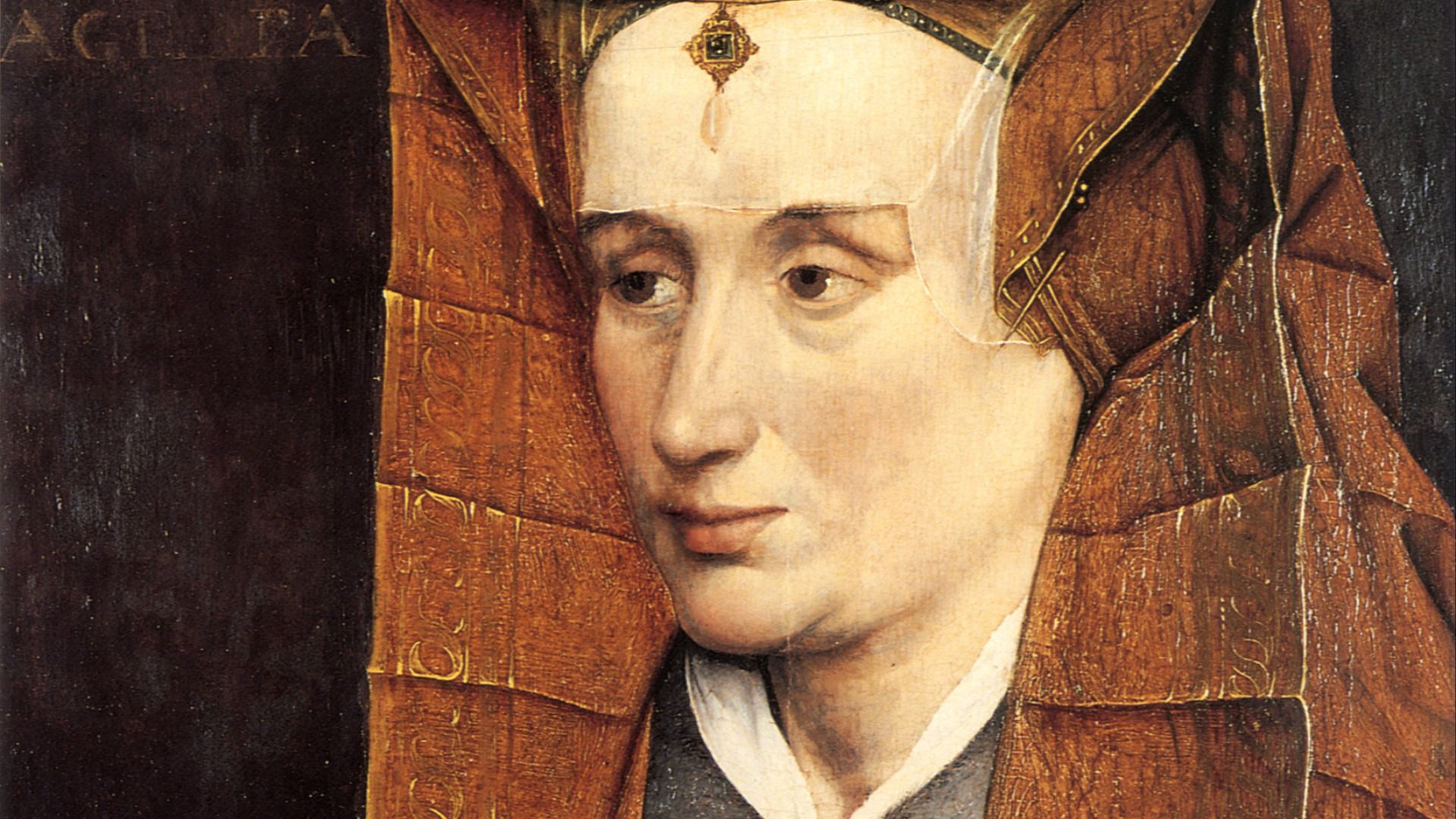 Jacques Daret, Wikimedia Commons
Jacques Daret, Wikimedia Commons
47. She Was Thriving
By 1530, Margaret was fifty years old and living her best life. She had respect, power, and comfort. After the turmoil of her childhood, everything finally settled down—and Margaret was likely content. It seemed impossible that something could bring her down, especially something as small as a piece of glass.
48. She Threw It All Away
On November 15, 1530, one tiny mistake spelled the end for Margaret: She stepped on a piece of glass. It was an inconvenient injury but far from a life-threatening one. Margaret wasted little to no thought on it. Which, perhaps, is why the cut became infected. Gangrene set in, and Margaret had to face the facts: She needed to have her leg amputated.
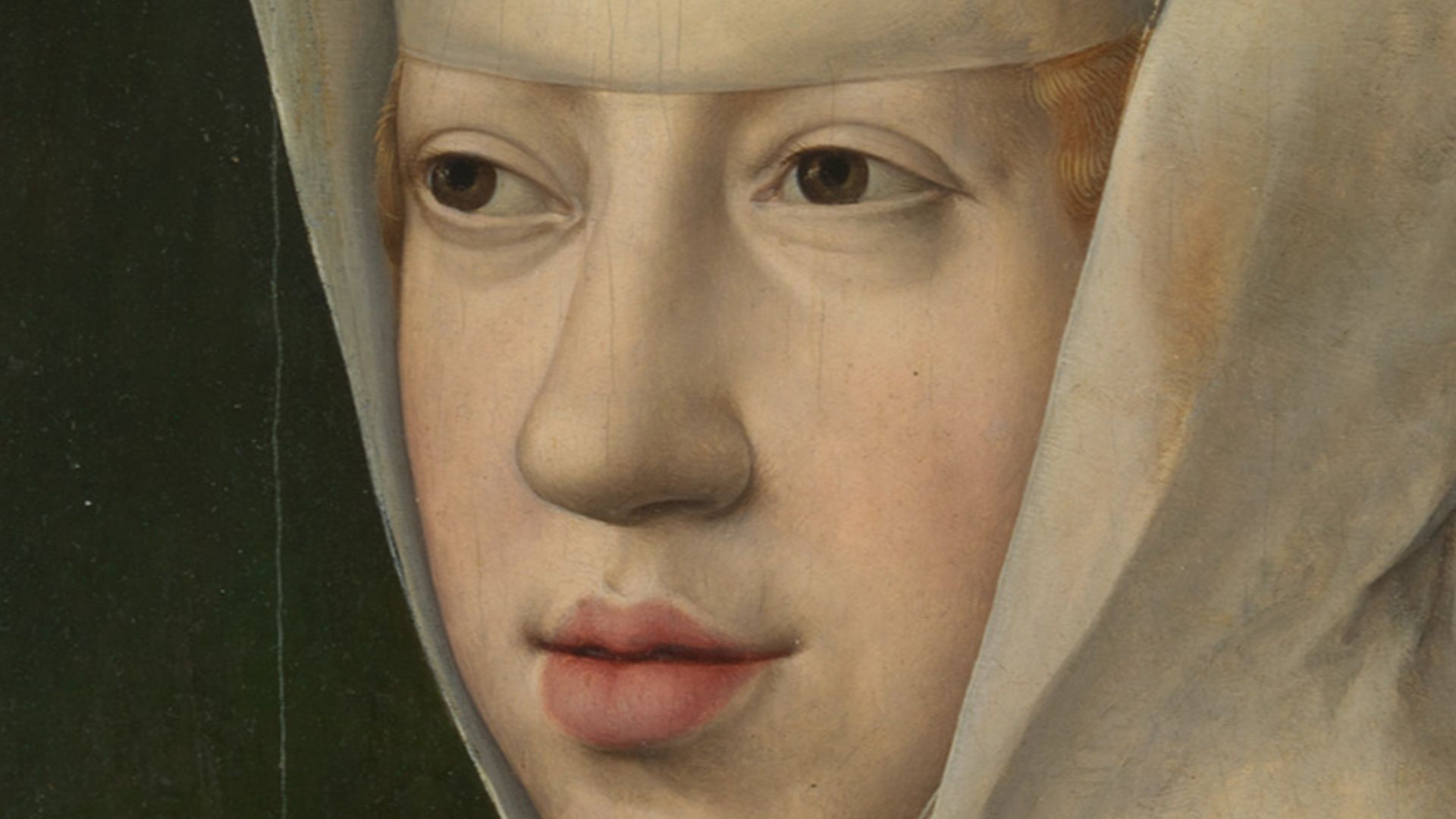 Bernard van Orley, Wikimedia Commons
Bernard van Orley, Wikimedia Commons
49. She Had A Brutal Operation
A level-headed woman to the end, Margaret settled her affairs before the operation. She named Charles V her sole heir and wrote to him, insisting that he uphold the peace enjoyed by France and England. This settled, doctors arrived on November 30 to perform the surgery. But this was where everything went wrong.
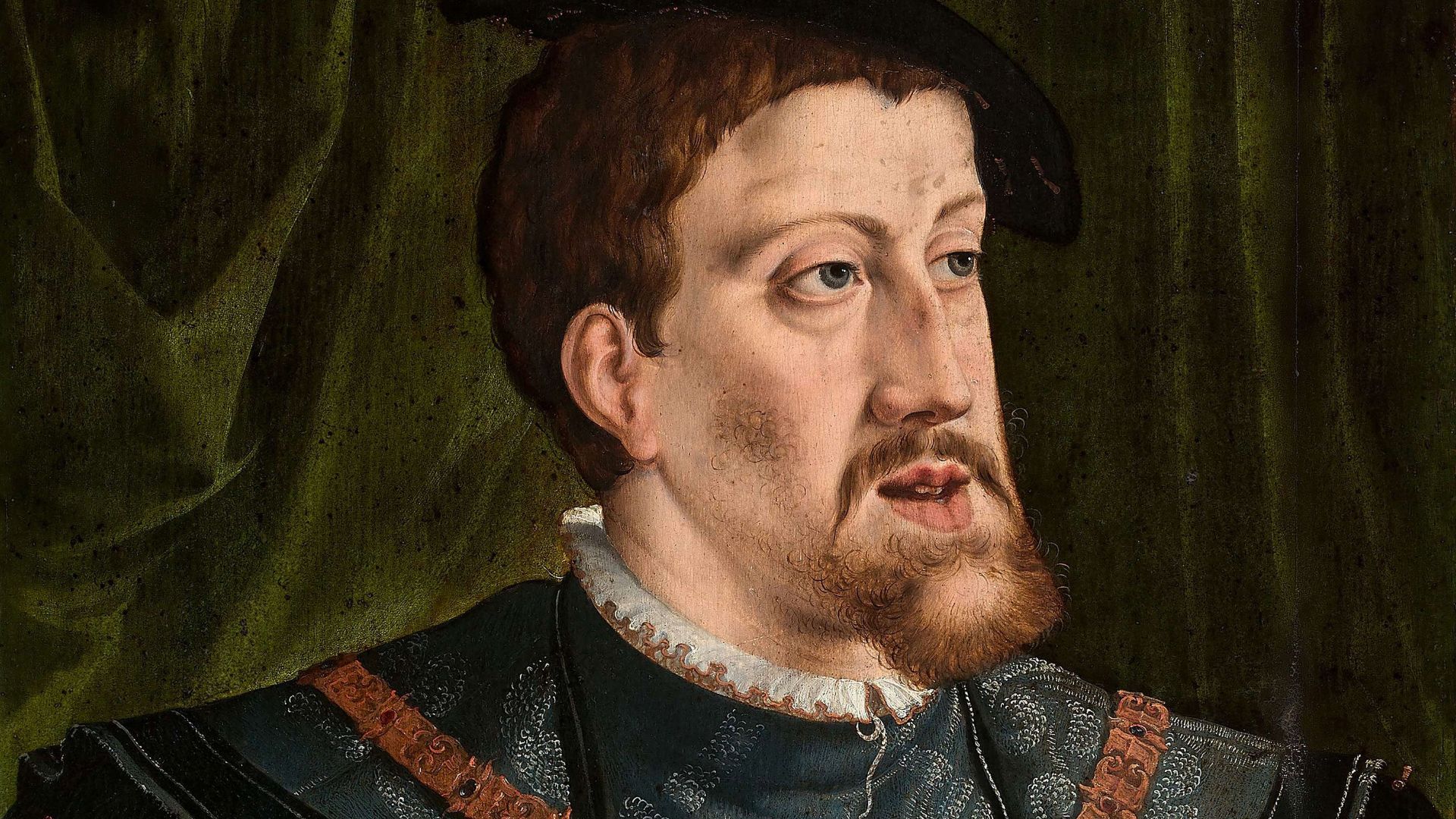 Attributed to Jan Cornelisz Vermeyen, Wikimedia Commons
Attributed to Jan Cornelisz Vermeyen, Wikimedia Commons
50. She Never Woke Up
The doctors gave her opium to diminish the pain, but there was one grievous problem: The drug was far too strong. The tragic consequence? Margaret of Austria never woke up. Her final resting place was undoubtedly fitting—laid to rest in the tomb she'd constructed in Savoy. Here, she was finally reunited with her late husband, Philibert.

51. Her Legacy Lived On
Margaret's legacy continued when Charles appointed his sister Mary of Hungary to replace Margaret as Governor. In a time when women were little more than pawns to be used to gain more power or settle disputes, Margaret paved the way for all women to turn the tables and seize power for themselves.
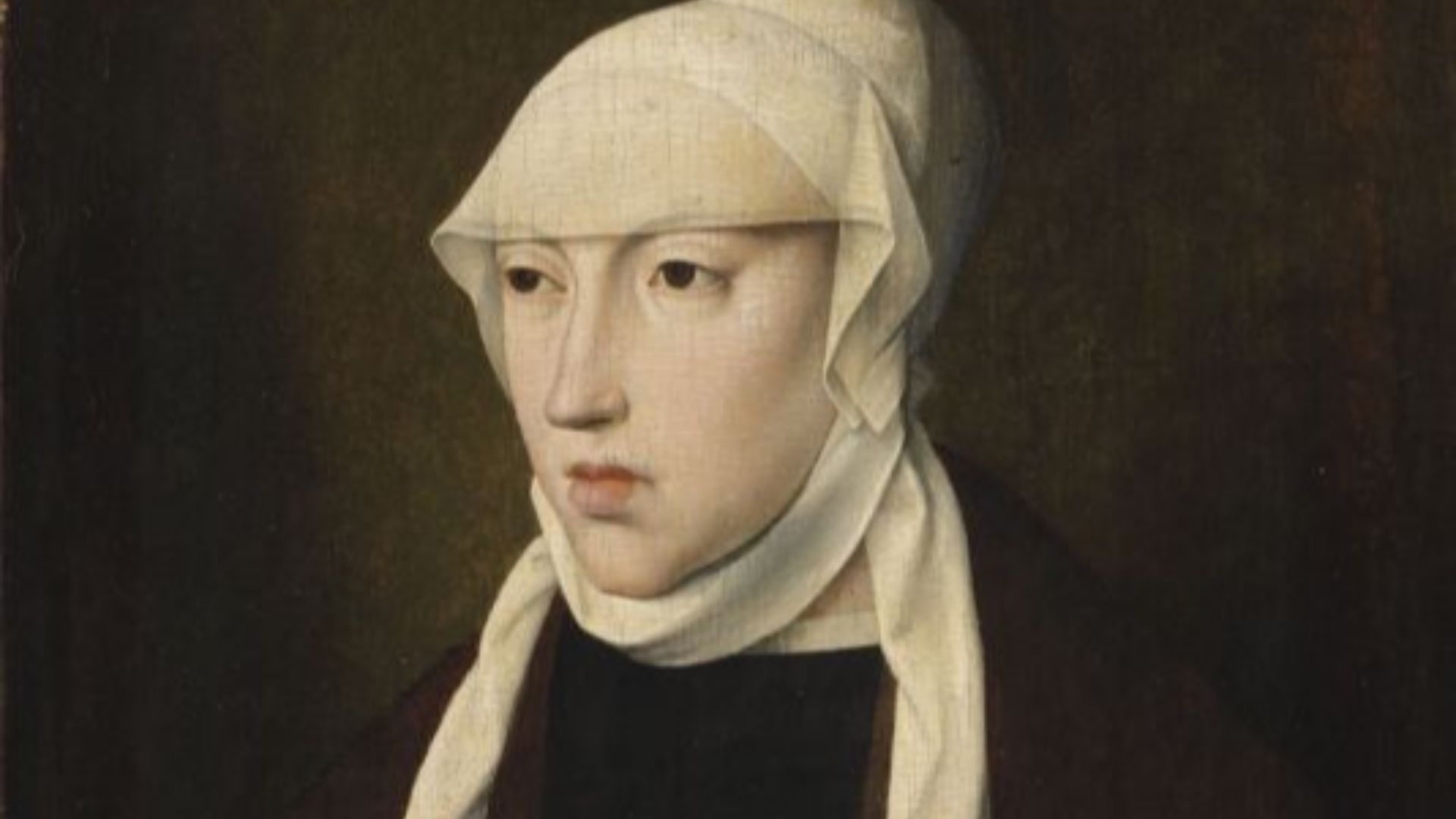 Master of the Legend of the Magdalene, Wikimedia Commons
Master of the Legend of the Magdalene, Wikimedia Commons
You May Also Like:
History’s Most Scandalous French Princess
The House Of Hanover’s Long And Historic Reign

